To advance the integration of Environmental, Social, and Governance criteria into everyday decision-making.


To advance the integration of Environmental, Social, and Governance criteria into everyday decision-making.





2-1, 2-6
Sigma is a global company dedicated to offering communities’ favorite foods. It has been a subsidiary of ALFA since 1980 and has more than 100 recognized brands in several market categories and segments, including packaged meats, cheese, yogurt, alternative protein products, and other refrigerated and frozen foods.
Sigma is present in 18 countries, operating 64 plants, 183 distribution centers, and 2 research centers.
With a focus on innovation, we serve and satisfy consumers’ changing demands. Our global presence allows us to share best practices across regions and business lines, optimizing the use of resources and increasing productivity levels. In addition, we consider sustainability as an enabler of our business strategy to advance the integration of environmental, social, and governance criteria in our everyday decision making.




2-1, 2-6
Our company is distinguished for having:
18 countries with Sigma operations

64 manufacturing facilities
11 brands with annual net sales of over US$100 million, each
183 distribution centers
8,000+ vehicles
670,000+ points of sale
2 research centers
Our performance in 2022 was captured in:
1.7 million tons of food sold
45,000+ employees from 60+ nationalities
US$7.42 billion in net sales
US$652 million EBITDA
9.1% compound annual revenue growth between 2010 and 2022

To bring communities everywhere favorite foods to love.



We improve our consumers’ daily lives by creating and serving favorite foods they love.
We explore and learn to generate new opportunities for value creation.

We deliver results with ethics and outstanding execution.
We lead by example, inspiring and motivating others to maximize their potential.
We promote quality of life by taking care of our people and communities.






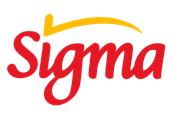


























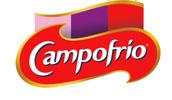








Operation in 18 countries: Mexico, United States, Spain, France, Italy, Belgium, the Netherlands, Portugal, Germany, Romania, Costa Rica, Guatemala, Nicaragua, Honduras, Peru, El Salvador, Ecuador, and the Dominican Republic.
Mergers and acquisitions

Commercial agreements



Organic growth
Growth Business Unit






2-23, 2-24, 2-29
Sustainability is a fundamental part of our business strategy. During 2022, we continued to implement Environmental, Social, and Governance (ESG) initiatives and actively promoted our team’s engagement. We also provide solutions to the global challenges we face, guided by our sustainability framework.
Our Sustainability Strategy is based on 4 pillars:




We reduce our environmental impact by using natural resources more efficiently.

We establish conditions that motivate and make it easier for people to adopt habits that improve their quality of life.
We promote healthy lifestyles through innovative and high-quality products.



We create economic and social value through our strategic practices and share them to stimulate development and strengthen our value chain.
These pillars are the foundation that supports our strategy and are the result of a detailed study of the needs and interests of our stakeholders, combined with what we identify as challenges and opportunities from an internal Sigma perspective. By considering all these variables within our sustainability framework, we ensure that our resources are deployed in the initiatives that are most relevant for our long-term growth, while creating a positive impact in our environment.
Having adequate working conditions to develop in the possible way.
2-29
We are in constant communication with our stakeholders through different channels to listen and attend their concerns, identify opportunities, as well as to communicate the results we have achieved.
Food offering in compliance expectations and dietary needs.
Products in compliance consumers’ expectations dietary needs. Safety and good quality of life.
Create business partnerships enable growth. Profitable and secure investments over time.
Having transparent and updated information for decision making.
That the companies constituting the country’s economy act proper and transparent manner.
To engage with strategic partners and collaborators to achieve their objectives.
working best with needs. with and life. that investments updated making. constituting in a manner. partners their
Attract the best talent and promote their wellbeing, professional development, and motivation.
Delight them with a portfolio of innovative and nutritional products.
Intranet, Transparency Helpline, organizational climate survey, Employee Service Program, website, newsletter, town halls, and Organizational Unit forums.
Contact centers, focus groups, satisfaction surveys, website, social media, and sales channels.
Exceed their expectations through value propositions and the sharing of best practices.
Carry out safe and sustainable operations and actively participate in their development.
Contact centers, Excellent Client Program, satisfaction survey, website, and sales force.
Website, social networks, Transparency Helpline, contact centers, events.
Recurring Annual Recurring Recurring Recurring
Maintain a long-lasting, mutually beneficial, and collaborative relationship.
Evaluation and training programs, contact centers, website, social media, and Procurement team.
Create long-term value.
ALFA’s Shareholders Meeting, quarterly reports, website, social media, Transparency Helpline, Sigma’s and ALFA’s Investor Relations teams.
Share operating, financial and nonfinancial results, that are sustainable over time, and also relevant to the market.
Comply with applicable regulations and establish partnerships for sustainable development.
Quarterly and annual financial reports, nonfinancial reports, press releases, and media coverage. Active participation in associations, chambers, and meetings.
Participate and collaborate effectively for social, scientific, and technological development.
Industry forums, meetings, committee participation, social media, and website.
Recurring Monthly Annual Recurring Quarterly Annual Recurring Quarterly Annual Variable, upon request or occasion Variable, upon request or occasion
2-29, 3-1, 3-2, 3-3
We updated our materiality matrix in 2020 in which we included the most relevant aspects for Sigma’s various stakeholders, thereby defining an efficient strategy for the future. As part of the materiality analysis exercise, we considered environmental, social, and corporate governance topics that are relevant to the industry in which we operate and to the UN Sustainable Development Goals.
Material topics
Health and Nutrition
A. Food safety and quality
B. Healthy and nutritional food
C. Ending food waste
D. Innovation, research, development, and scientific collaboration

Shared Value
E. Ethics and integrity
F. Sustainable procurement and value chain management
G. Economic performance
Wellbeing
H. Employee health, safety, wellbeing, and work-life balance


I. Diversity, equal opportunity, and inclusion
J. Employee training and development
K. Organizational culture and work environment
Environment
L. Climate action
M. Water management
N. Circular economy and sustainable packaging
O. Clean and efficient energy

Departments that participated in the assessment of environmental, social, and governance aspects for Sigma:
• Innovation
• Packaging
• Quality and Food Safety
• Health and Nutrition
• Investor Relations
• Food Donations
• Health and Safety
• Wellbeing, Inclusion, and Volunteering
• Talent Development
• Human Resources
• Company Culture
• Operations
• Energy
• Procurement
• Internal Control
• Product and Process Development
• Corporate Social Responsibility







2-23, 2-24, 2-28
We have been a signatory of the United Nations Global Compact since 2021. As part of our commitment to this initiative, we have mapped our contributions to each of the SDGs.
We reduce our environmental impact by using natural resources more efficiently.
Contribution to 2030 Agenda 2022 Achievements


US$15.7 million invested in environmental initiatives.
16% reduction in CO2eq emissions related to our plants and transportation fleet, per ton of food produced (compared to 2015).
62%+ of the electricity we consumed in our production facilities was produced from cleaner or renewable sources.

7,880+ tons of virgin plastic avoided in our packaging since 2019.
1.69 million cubic meters of water reduced compared to the previous year.
We establish conditions that motivate make it easier for people to adopt improve their quality of life.
Invested US$19 million in wellbeing initiatives.
1,900+ leaders participated in Conscious Leaders program.
8%+ of employees participated volunteer activities.

43% reduction in accident rate year (2018).
30 hours of average training per Launched Diversity,
and Inclusion committees Organizational Units.



motivate and adopt habits that

We promote healthy lifestyles through innovative and high-quality products.
We create economic and social value through our strategic practices and share them to stimulate development and strengthen our value chain.

wellbeing in the participated in rate vs. base per employee. Equity, in all
Invested US$38.8 million in Research & Development.
1.8 times more sales of the Health & Wellness portfolio compared to 2019.
1,300+ employees participated in the Innovation Forum.
12 pilots with startups through Tastech by Sigma.
80+ products with improved nutritional profiles during 2022.
94% of plants with GFSI-endorsed certifications.
175+ million servings of food donated since 2015.

We continued our support for the 10 Principles of the UN Global Compact, having been a signatory since 2021.

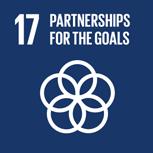



Suppliers representing 51% of raw material spending evaluated on ESG criteria.
440+ producers in the Dairy Development Program in Mexico and Costa Rica.
130+ local, national, and international associations in which we actively participate.

2-23, 2-24, 3-3
Commitments
Climate Action
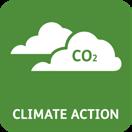
Water Management

Reduction in CO2eq emissions related to our plants and transportation fleet, per ton of food produced (compared to 2015).
Reduction in water consumption per ton of food produced (compared to 2018).
Cleaner Energy

Health and Safety

Professional Development

Volunteering
Sustainable Innovation


Percentage of electricity used in our plants coming from cleaner and renewable sources.
Reduction in the accident rate at our operations (compared to 2018).
Increase in the number of training hours per employee (compared to 2018).
Percentage of employees participating in volunteering activities.


Double the sales of products launched under the Health and Wellness portfolio* (compared to 2019).
Health & Nutrition

Shared Value

Food Safety
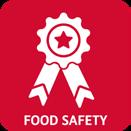
Nutritional Information

Responsible
Sourcing
Food Donations

Percentage of our plants with GFSI-endorsed certification (acquired as of 2018).
For markets without a local mandatory labeling regulation as of 2018: Packaged products portfolio with nutritional facts on label.
Percentage of purchases from suppliers with enhanced sustainability practices.
Tons of food donated (since 2015).




















* The Health and Wellness portfolio consists of products launched under the Health & Nutrition and Trust & Sustainability innovation platforms.



**Suppliers that comply with criteria from both of the evaluations carried out.

Within these four strategic pillars, and considering our material topics, we focus on four transformational topics for long-term sustainable growth. These are:

Evolve our direct sources and consumption of energy towards decarbonization.
Execute the global water stewardship strategy to ensure proper use of the resource.

Engage with the value chain to ensure sustainability compliance and benchmark best practices.

Promote a circular economy to minimize the environmental impact of our products.

The 2022 Global Sustainability Forum brought together more than 1,450 employees from all our geographies to discuss main achievements and how the company’s 2025 Sustainability Commitments can be accomplished. In addition, we invited a number of experts to speak about the challenges society is facing in relation to water and gender equity.
We celebrated Sigma’s Sustainability Week, in which employees proactively adopted actions aligned to the United Nations Sustainable Development Goals. In the fifth edition of this challenge, more than 450 employees and their families attended workshops and carried out actions in favor of the environment and the community, including recycling initiatives, inclusion of people with disabilities, and meditation for wellbeing, among others.
Through the Sustainability Newsletter, we create awareness among our employees and communicate our efforts’ results. We also recognize the work of all those who contribute to the strategy and encourage them to continue promoting new initiatives.

“
“ We have defined a sustainability governance structure based on best practices. For more details, visit the Corporate Governance section of this report.
We continuously reduce the environmental impact of our operations and value chain, promote a circular economy, and use natural resources efficiently.

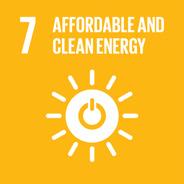


US$15.7 million invested in initiatives related to environmental stewardship


16% reduction in CO2eq emissions related to our plants and transportation fleet, per ton of food produced, compared to 2015

62%+ of the electricity we consume in our production facilities comes from cleaner or renewable sources
7,880+ tons of virgin plastic avoided in our packaging since 2019

1.69 million cubic meters of water reduced compared to the previous year






• Sustainable Packaging Program


Point-of-sale
• Efficient refrigerators at point-ofsale
• Inventory optimization
Logistics and distribution
• Disruptive technologies in our distribution fleet



• Route optimization
• Refrigerants Conversion Program
3-3: Climate action || 305-5


SASB FB-MP-110a.2
SDG 7: Goal 7.2 || 9: Goals 9.2, 9.4 || 13: Goals 13.2, 13.3
We constantly seek to become more sustainable at all Company levels. As a result, we use cleaner and renewable energy in our operations and reduce emissions throughout our value chain.
Our goal and progress
Percentage reduction in CO2eq emissions related to our plants and transportation fleet, per ton of food produced (compared to 2015).
Progress: 16% 2025 goal 20%
2-27, 2-28
We use environmental management systems for continuous improvement and remain attentive to new technologies to identify, assess, control, and reduce potential risks, as well as our carbon footprint.

Environmental certifications
Autorización Ambiental Integrada (AAI)
European Directive 2010/75/EC on emissions and contamination controls.
ISO 14001 Global environmental management standard.
ISO 50001 Global energy management standard.
7 plants in Europe.
Environmental Management Plan at the Bureba plant in Spain.
Aoste, Maclas, and Saint Symphorien plants, in France.
Retray Process Certification Certification that verifies compliance with traceability requirements and the percentage of recycled material content in PET packaging. Ólvega Pizza Plant, in Spain.
More than 120 employees actively participate in our environmental initiatives. The Environmental Community applies best practices throughout our operations, raising awareness among employees about environmental stewardship and natural resource management. More than 60 projects focused on water, fuel, and electricity solutions were presented during the 2022 Sustainability Meeting. The evaluation committee recognized three teams with related training courses and technical equipment to continue pursuing efficiencies.




2022 was a crucial year in defining our next steps in the decarbonization strategy. Our strategy is aligned with the Science-Based Targets initiative to achieve the goals established in the Paris Agreement. Our targets were approved in June 2023 and we are constantly working on initiatives across our different Organizational Units to reduce our greenhouse gas emissions.

OUR CDP SCORE FOR CLIMATE CHANGE IN 2022 REMAINED AT B; 2 LEVELS ABOVE 2020.
By 2022, we achieved an 16% reduction in CO2 equivalent emissions per ton of food produced from our plants and refrigerated transport fleet, compared to our 2015 baseline (scope 1 and 2 emissions). The Climate Action Program operates under the following action lines:

We also contribute to mitigating climate change through reforestation efforts. During 2022, we partnered with NGOs on reforestation campaigns, the protection of flora and fauna, and strengthened our relationship with the communities where we operate.

We planted 2,100 maguey cacti on 3 hectares of Cumbres de Monterrey National Park in collaboration with Reforestamos México A.C. Seven families in the area were benefited. Additionally, 21 volunteers participated in the removal of invasive exotic species from 1 hectare of the park.
We planted 1,600 pine trees in Serras de Aire e Candeeiros Natural Park with the support of 47 volunteers.


We participated in the Siembratón, an event promoted by the Guayaquil City Hall, in conjunction with private companies. We planted 4,000 trees in 8 natural areas among all the participating companies.

We provided technical advice to our Dairy Development Program suppliers on regenerative farming practices, such as windbreak trees to favor the growth of forage in order to reduce dependency on food produced off-farm, the use of waste as fertilizer for crops, grazing systems that improve soil management, among others.

Nearly 80% of our carbon footprint comes from raw material sourcing and transportation. We therefore seek to reduce our supply chain’s carbon footprint as part of our decarbonization strategy. This includes a commitment to optimize scope 3 emissions.
Sigma joined CDP Supply Chain in 2020 and, starting in 2021, began measuring the value chain environmental impact. In 2022, we made considerable progress in mapping this impact, covering around 35% of raw material spending. Throughout 2023, we will provide feedback and best practices recommendations for suppliers.

We analyze the climate risks we are exposed to, including physical and transitional ones. As a result, we have designed mitigation measures such as our Climate Action Program and Global Water Management Program, as well as the integration of an internal carbon price in energy project evaluations.






3-3: Clean and efficient energy || 302-1
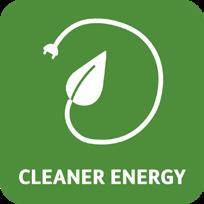
SASB FB-MP-110a.2, FB-MP-130a.1, FB-PF-130a.1
SDG 7: Goal 7.2 || 9: Goal 9.4

Control systems, as well as the integration of new technologies to the operation, allow us to optimize and reduce our energy consumption.
Our goal and progress
Progress: 62%+ 2025 goal 67%
Percentage of electricity used in our plants coming from cleaner and renewable sources.By 2022, electricity consumption2 from cleaner or renewable sources (e.g., wind, solar, cogeneration) accounts for more than 62% of our plants’ electricity needs. We are thereby close to reaching our 2025 goal, in which we committed to 67%.
During the year, we installed around 30,000 solar panels in Spain and the Dominican Republic. We also signed a solar power purchase agreement (PPA) to supply 14 distribution centers in Mexico starting in 2023. Moreover, the plants in Spain and Peru have renewable energy supply agreements for 30% and 100% of their electricity consumption, respectively.


“ “ Peru has renewable energy supply agreements for 100% of its electricity consumption.
FB-MP-110a.2
In addition to sourcing cleaner or renewable sources, we seek efficiency in our operations’ consumption by investing in innovative technologies and the development of better management systems.
Our initiatives to optimize electricity consumption also extend to our value chain, including our customers’ points of sale. Since 2014, we have delivered more than 54,500 energy-efficient refrigerators to stores where our products are sold in Mexico. In addition to reducing energy consumption at the point of sale, they keep our products fresh.

We are constantly analyzing alternatives for cleaner fuels, including natural gas. We expect to complete a project for the Chancay plant in Peru during 2023 to consume only natural gas, resulting in 100% of the plants in the country operating on cleaner fuels. We have also started evaluating the use of hybrid hydrogen as a future alternative to increase energy efficiency while generating a lower environmental impact.

We leverage local supply chains to produce energy from biomass4. By doing so, we reduce CO2 equivalent emissions and organic waste disposed of in landfills. Additionally, we benefit the community’s economy. For example, since 2020, the Santiago and Sosúa plants in the Dominican Republic have been using coconut byproducts for boilers, achieving benefits for the operation, the environment, and the community.
In our Aoste plant in France, we formed a strategic alliance with a supplier to channel organic waste for biogas generation. As a result, we avoided the transportation of waste and reduced our Scope 3 emissions by 2,200 tons of CO2 equivalent.

We installed refrigeration systems with lower environmental impact and proactively monitor their correct operation to prevent leaks through our Refrigerant Conversion Program. The regions with the greatest progress are Europe, where we have reduced more than 14,000 tons of CO2 equivalent emissions since 2019, and the United States, where 67% of our sites already have more environmentally friendly refrigeration systems. We will continue exploring refrigeration systems that contribute to emissions reductions.
During 2022, we initiated a pilot program in Mexico with 19 utility and last-mile distribution vehicles that are 100% electric, additional to the hybrid and compressed natural gas vehicles already in operation. The purpose of this pilot test is to evaluate the units’ performance to determine the most efficient path toward the electrification of our fleet. These efforts will further reduce carbon emissions and drive the adoption of cleaner technologies in our operations.
The new electric last-mile delivery vehicles also have a more environmentally friendly refrigeration system, while preserving the food’s quality and freshness during transportation.
We continuously optimize distribution routes to improve fuel efficiency, increase vehicle capacity usage, and invest in the development of more efficient refrigeration systems.
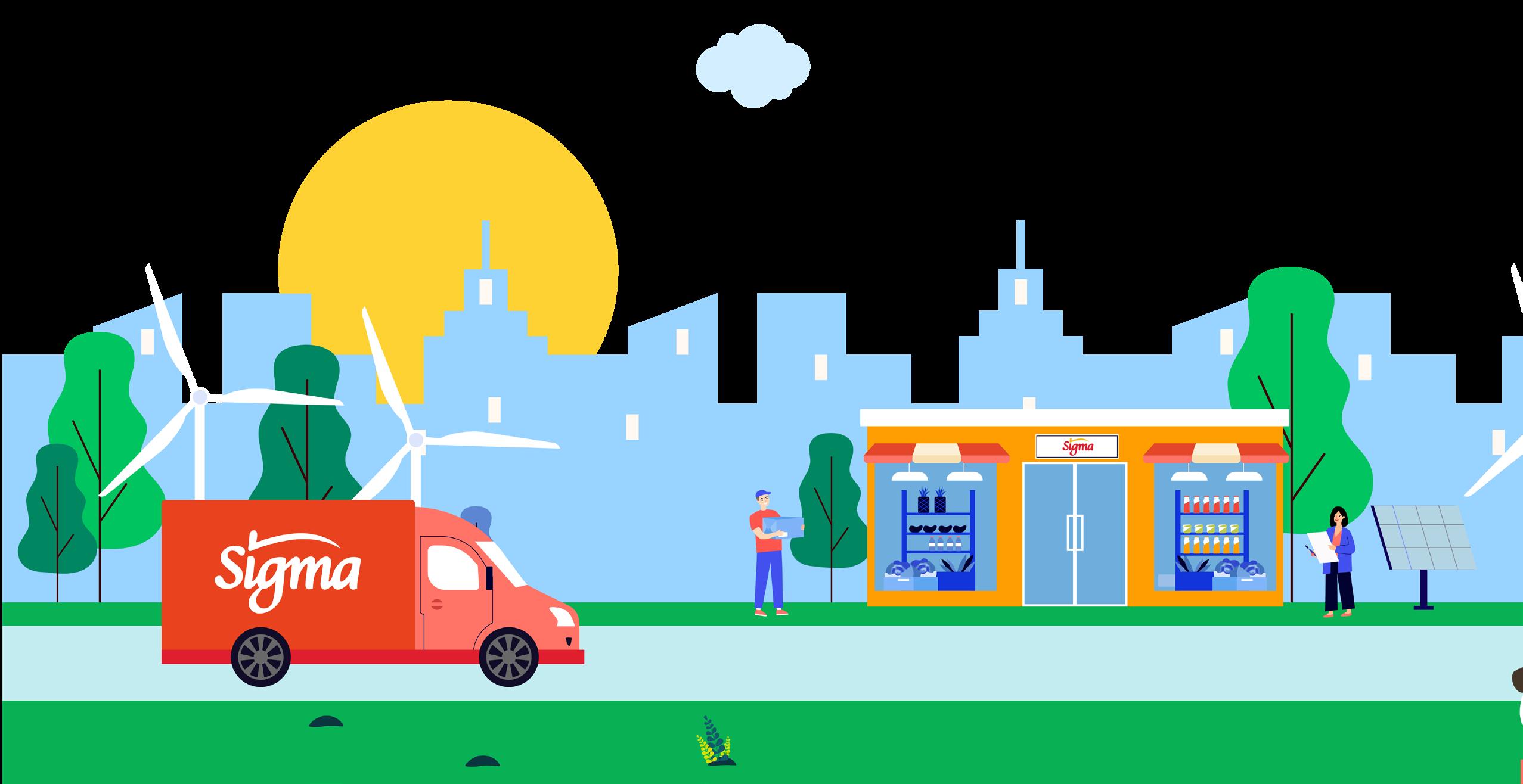

We are making progress towards our energy efficiency goals by:
Using cleaner or renewable energy

Integrating new technologies into our operations
Transitioning to an electric, hybrid, and natural gas fleet


Reducing energy consumption

Having adequate management systems

Peru We implemented the first energy storage system to reduce consumption during the grid’s peak usage periods, lowering operating costs.

3-3: Water management || 303-1, 303-2, 303-3

SASB FB-MP-140a.1, FB-MP-140a.2 || FB-PF-140a.1, FB-PF-140a.3
SDG 6: Goals 6.3, 6.4
We raise awareness among our team members about the importance of water stewardship in our operations and in their daily lives. We encourage the development of water reduction and reuse projects, as well as the best industrial hygiene practices.

Our goal and progress
Percentage of reduction in water consumption per ton of food produced (compared to 2018).
Progress: 12%
2025 goal 20%


Recognizing the water risk to which we are exposed, each year we conduct a water risk analysis with Aqueduct, a digital tool from the World Resources Institute (WRI), which provides information to measure water-related risks at each of our locations. As a result, we were able to identify operations located in water-stressed areas and their expected future behavior, as well as flooding, and drought risks, among others. We complemented this analysis with an internal benchmarking exercise to identify the most efficient plants and share best practices. We highlight that our operations in Mexico have the highest levels of water efficiency in our portfolio, given the greater water risk in the region.

DURING 2022 WE EXECUTED A PILOT WITH A PLATFORM TO IDENTIFY PHYSICAL, REGULATORY AND REPUTATIONAL RISKS RELATED TO WATER USE.
We identified our best-performing operations on water management and replicated these practices across the rest of our plants to:
Achieve more ambitious water consumption reduction targets

Invest in and develop new transformational technologies

Define parameters for growth plans

In 2022, the central Sustainability team worked with nine of our sites
with the most critical water use to structure an optimization roadmap and identify new technologies to reduce water intensity.
We invested in water treatment systems and new technologies to improve the use and reuse of water, as well as to advance towards our goal of reducing water consumption per ton of food produced.
The Environmental Community managed projects related to water stewardship. For example, the plants with the highest water consumption requirements in Mexico have an additional water treatment system that allows us to increase water recovery at the end of the production cycle and use it in secondary processes, including its use in condensers, and watering green areas. At the Noreste plant in Mexico, we replaced the use of fresh water with treated wastewater in 2 of the 5 condensers, thus avoiding the use of up to 90 m3 of fresh water per day. In addition, valves were changed to prevent water leaks. This was especially relevant given the water stress conditions experienced in the operation in Mexico during 2022.

France
Installed a new cooling system, achieving a 50% reduction in water consumption at the Aoste plant.
Mexico Costa Rica
Carried out a major preventive maintenance program at the water treatment plants.
We provide knowledge to farmers from our Dairy Development Program on fertigation equipment installation and management to improve the efficiency of pasture irrigation, as well as on the installation of rainwater harvesting systems.
Committed to the responsible use of water, we defined our Water Management Policy, which includes guidelines for risk management, continuous improvement in the use and reuse of the resource, as well as engagement with our stakeholders.
We periodically include water-related developments, risks, and opportunities on the Executive Committee’s agenda to strengthen water management practices in our operations.



Our future water management strategy will continue to be driven by three pillars:

Reducing our water footprint
Capture water from alternative sources

Create a positive impact on society and the environment

CDP AFFIRMS OUR WATER SECURITY RATING AT B FOR 2022.




We achieved a 14% reduction in water consumption per ton of food produced, compared to the previous year.

The Foodservice business in Mexico increased its production without increasing its water consumption, hence improving water efficiency.


We deployed the One-Shot initiative for washing and hygiene services on production lines in Europe, reducing water consumption and upholding high safety standards.
We included a talk by Waterplan® in the 2022 Sustainability Forum to raise awareness among our employees.

3-3: Circular economy and sustainable packaging || 301-2, 306-1, 306-2
SASB FB-PF-410a.1
Our products’ packaging has the primary function of protecting food, preserving its properties, ensuring shelf life, and offering the best consumer experience. Our packaging’s life cycle is a relevant factor in minimizing environmental impact. Through our Sustainable Packaging Program, we incorporate circular economy considerations from the design stage, selecting recycled and biodegradable materials, or those that can be recovered. At the same time, we steadily reduce the amount of plastic in packaging. The program involves a global team that works together with the Research and Development, Innovation, Quality, Technology, and Marketing areas, as well as with suppliers, academia, and the entrepreneurial ecosystem.
In 2022, we avoided the use of more than 1,360 tons of virgin plastic, reaching a cumulative amount of over 7,880 tons averted since 2019. Additionally, Sigma Europe has set a goal to reduce 400 tons of virgin plastic during 2023.

Sigma’s Sustainable Packaging Program has the following action lines:






Packaging solutions plastic as a result thickness, layers, or



Simpler packaging with the right materials make recycling easier.

SUSTAINABLE
Packaging with components in a five years.
solutions that use less result of reductions in or components.



Increase in the percentage of recycled plastic, avoiding the disposal of materials in landfills.
with biodegradable period of less than
2-28
We actively manage waste from our operations. This includes separating waste so that authorized third parties can reuse, recycle, or dispose of it in accordance with applicable regulations. We build strategic alliances with service providers that co-process waste. Additionally, in Europe we manage the Zero Waste to Landfill Program, with the objective of recycling or recovering at least 90% of solid waste.
We participate in and collaborate with non-profit associations focused on fostering a culture of recycling and proper waste management in the communities where we operate, including ECOCE in Mexico and ECOEMBES in Spain. For example, Sigma is part of the High-Density Polyethylene and Polypropylene Technical Committee at ECOCE, which promotes the collection of yogurt bottles across Mexico.
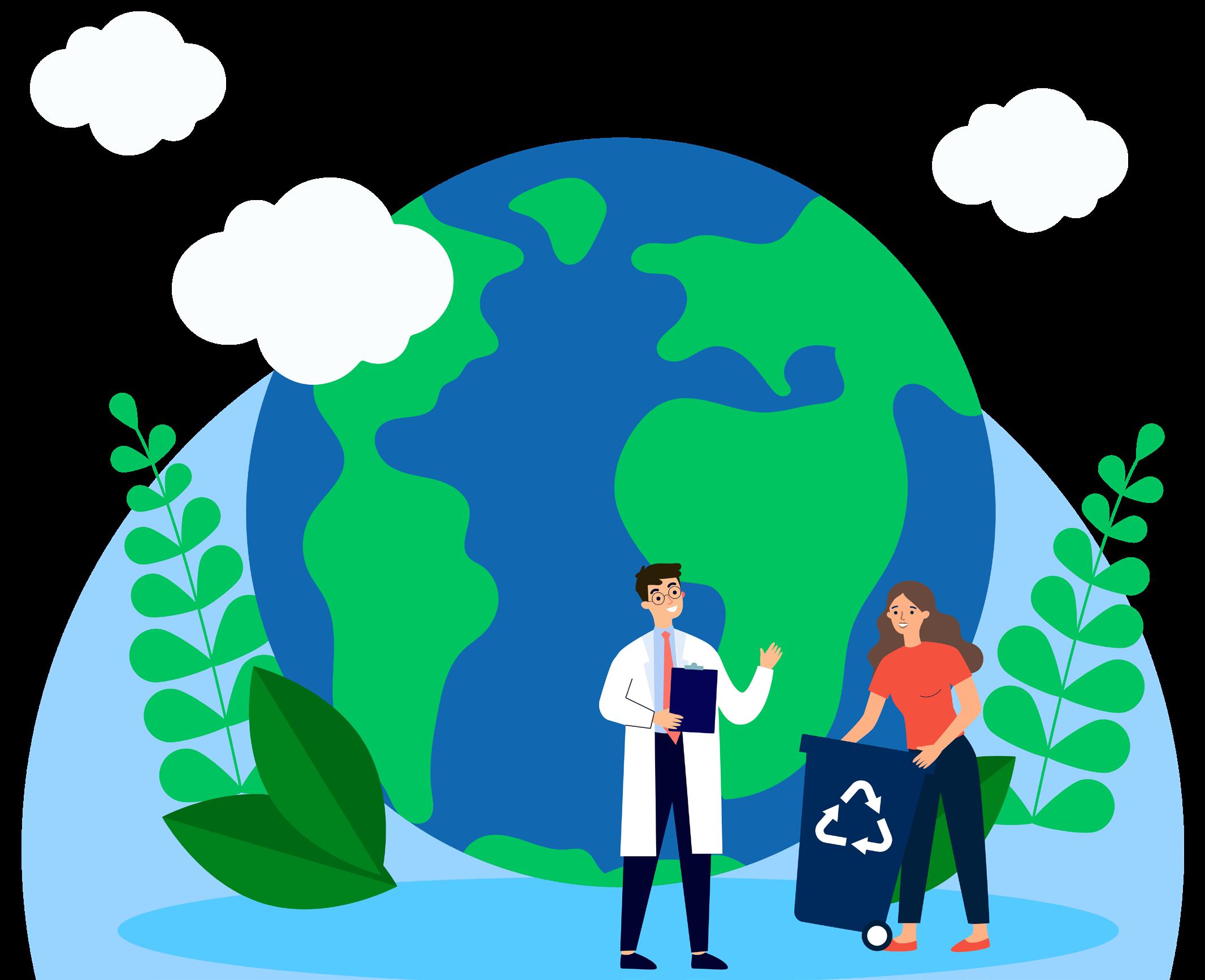

The Olvega Pizza plant in Spain managed to recycle 90% of its waste, as part of the Zero Waste to Landfill Program.


We increased recycled PET in packaging to 60-80% in products such as FUD Virginia ham and San Rafael sausages.

Incorporated an additive to make drinkable yogurt packaging biodegradable (5-7 years) in the Dominican Republic.


Migrated to purchase pallets with 100% recycled content in Mexico.

We developed packaging with 60% recycled material and a lower caliber of plastic containers for San Rafael brand products.
Produced packaging with 80% recycled materials in Fiorucci brand products in Richmond, USA.
We included up to 80% recycled content in all PET-based packaging from the Sigma Dairy Division in Mexico.








We establish conditions that encourage and empower people to adopt habits that improve their quality of life.
US$19 million invested in wellbeing initiatives
1,900+ leaders participated in the Conscious Leaders program



8%+ of employees participated in volunteer activities

43% reduction in accident rate compared to the baseline (2018) 30 hours of training on average per employee

Equity,
Inclusion committees integrated in each region

We actively encourage a culture that drives growth by focusing on things that are in our control, encouraging open and timely discussions, break down stereotypes, and uncovering root causes to find solutions. At Sigma, we are more than 45,000 employees in 18 countries. Since 2018, we have collectively built a unique culture where we value our consumers, customers, members of the communities in which we operate and all other stakeholders with whom we interact. We seek to create a space where our employees can develop freely. We will continue to work every day to make Sigma a place that generates value for everyone.

In 2022, we carried out the third edition of the Conscious Leaders program, where more than 1,900 leaders from our organization participated in four modules with 180 internal facilitators to address culture matters.

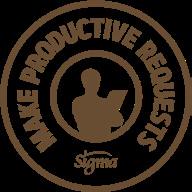
Take responsibility and focus on what is under your control.
Learner

Balance confidence and humility when sharing ideas, and inquire about others’ ideas.
Make clear and realistic requests, explaining the purpose, concern, task and expected results.


Ensure fulfillment of agreements or renegotiate in a timely manner.

Provide honest and fair feedback, be open and empathic, and understand the needs of the involved parties. Together we can achieve more!
• Continuously leveraging our digital training tools.
• Integrating learning communities, which included close to 100 leaders, to share best practices and further promote the Sigma Culture.
• Organizing regional town halls, fostering two-way communication with local leaders.
• Deploying Cultural Dynamics to 11,000+ employees, where we covered our Essential Behaviors and fostered psychological safety within the organization.
• Organizing four webinars, with 1,000+ employee participants each, where organizational leaders shared how they live our culture every day.

The psychological safety promoted by our leaders encourages us to share our opinions and points of view, in addition to creating trust and strengthening the team.
It has been a very enriching experience, where we have been able to share our positive and negative thoughts with the team without ties and in a personal way. It gives you an opportunity to make a personal reflection to improve in the future.

We design training sessions and workshops to improve our meeting and collaboration habits in order to address and prevent cases of work overload. Likewise, we encourage open dialogue to provide support and guidance in these situations.
We continuously measure our progress in adopting the Sigma Culture through surveys and feedback. For the third consecutive year, we applied the Culture Pulse assessment to more than 4,000 employees, which allowed us to understand our progress and identify areas of opportunity. If we can measure it, we can improve it!




Our Culture Recognition program rewards employees who reflect our Essential Behaviors and Principles in exemplary ways. This year, employees nominated more than 4,500 colleagues who live our culture to the fullest, with recognition given to the most outstanding.




THE CULTURE PULSE SURVEY INDICATES THAT “BEING A LEARNER” IS THE BEHAVIOR WITH THE HIGHEST ADOPTION RATE.

We monitor the Wellbeing Index in Mexico, which includes topics such as community, social development, relaxation, diversity and inclusion, physical activity, flexibility, and emotional intelligence, among others. The methodology considers fundamental aspects for employees’ integral development.
We strengthen our policies and initiatives designed to attract, retain, and develop talent, based on the information gathered through the Employee Engagement survey5 developed by ALFA.
85% of our employees took part in the 2021 - 2022 cycle survey and we achieved an 81% level of commitment.

“
“
For the third consecutive year, the Wellbeing Index grew thanks to volunteering and physical activity, as well as greater inclusion in recruitment and selection processes.
In Spain, we formalized our commitment towards balance and diversity with Compromiso Equilibra, which is managed through the EFR (Family-Responsible Company, in English) model from Másfamilia Foundation, holding this certification since 2015.

Continue to develop conscious leadership teams that embrace the behaviors that make us stand out and break down cultural barriers. These efforts strengthen Sigma’s long-term competitiveness.

It is very valuable and important to make our colleagues and teams feel that their contributions are taken into consideration and that great changes or improvements can come from any member of the team.
Mauricio Chacón Matamoros Warehouse Supervisor, Costa Rica
The team found several examples of how the environment within Sigma US has improved in terms of safety so we can continue to contribute to these efforts.
Leonel Flores Director of Accounting Hispanic Brands, US
3-3: Health, safety, wellbeing, and work-life balance || 403-1, 403-2, 403-3, 403-5, 403-6, 403-9 FB-MP-320a.1, FB-MP-320a.2

SDG 3: Goal 3.8 || 8: Goals 8.5, 8.6, 8.8

We are committed to ensuring the health and safety of our employees and third parties involved in our operations. Our management system is focused on detecting, evaluating, controlling, and preventing accident risks throughout the value chain.

Our goal and progress
Reduction in the accident rate at our operations (compared to 2018).
Progress: 43%
403-1, 403-2
We have a Health and Safety Management System that includes the 12 Health and Safety Best Practices Program and the Total Productive Maintenance (TPM) Program, which is audited and certified by the Japan Institute of Plant Maintenance. Through these, we promote a culture of prevention and respect applicable rules and regulations. Their objective is to minimize incidents, attend to emergencies, and avoid recurrences.

The governance structure developed to manage health and safety issues includes employees responsible for coordinating the systems and following up on the 12 Health and Safety Best Practices Program. Their responsibilities consist of reporting risks to management on an ongoing basis, deploying team trainings, keeping statistical control and investigation of incidents, attending inspections, and coordinating drills, among others. We also have supervisors who, together with their teams, implement emergency preparedness measures, including drills and training, as well as the acquisition, installation, and maintenance of protective equipment. In addition, we continuously train our employees in emergency response and relapse prevention.

2-23, 2-24

We are all responsible for maintaining safe operations. Through training sessions, we invite employees to commit to safe practices, as well as to care for their own physical integrity and for that of their colleagues.
We commit to ensuring that employees know, are familiar with, and committed to complying with the principles established in the Safety Policies.
We have a broad training program to provide employees with the tools they need to perform their jobs safely and to reinforce a culture of health and safety. In addition, we offer recommendations to promote health at home.
Through different tools that include dashboards, sessions, and workshops, we continuously recommend improvements that favor a culture of health and safety across our operations.
We implemented initiatives to recognize the positive performance of employees in terms of health and safety.
We have a structure in place that clearly describes the various roles everyone plays in the implementation of the company’s Health and Safety System.
We offer the necessary training and tools to supervisors and managers at our plants, as they are primarily responsible for implementing the Health and Safety System across our operations.
The company’s leaders are part of a chain of responsibility in the implementation and monitoring of the health and safety initiatives. At all our operations, designated supervisors ensure that all tasks are performed safely.

We implement robust risk assessment tools and monitor all findings and the application of recommendations closely. We adhere to laws related to the protection of employees in every location where we operate. Moreover, we have protocols in place designed to strengthen the safety culture based on best practices and our Health and Safety System.
We employ the company’s Procedure for Managing Incidents to identify and analyze the root cause of any concerning events, as well as the way in which we can strengthen our initiatives and training to eliminate potential risks. We use an online collaboration platform to share lessons learned across our operations.
We routinely make internal inspections at our operation sites. These help us validate the effectiveness of our health and safety practices and to make recommendations when opportunities for improvement are identified. Finally, we verify that these recommendations are implemented.
We establish ambitious performance goals for our plants, which we measure and communicate using standardized key performance indicators for our industry.

We have five management committees: operational discipline, accident investigation, emergency response, health and safety, and occupational health; and three optional committees that are deployed according to each location’s needs: process safety, environmental protection, and off-site safety. These committees hold monthly meetings with the teams in charge of generating and auditing safety standards.



403-9
We reduced the global accident rate by 43% compared to the 2018 baseline, exceeding our 2025 Goal for the third consecutive year.
We maintained our Third Level certification, the highest attainable level, from the Health and Safety Self-Management Program from the Secretaría del Trabajo y Previsión Social of the Mexican Government, at our Noreste and Chihuahua plants in Mexico.
We achieved a zero-accident status in 14 plants globally during 2022.
The safety management structure in the United States was strengthened by hiring more professionals to join the team.
We continued with the implementation of the 12 best practices, expanding the program to more operations in different countries in Europe.
We are committed to ensuring that our employees are informed of, familiar with, and comply with the Security Policies’ principles.


403-6
We promote a healthy lifestyle for our employees. During 2022, the main focus was to share information about actions that help maintain good health through healthy eating, stress management, and physical activation. For these activities, we have specialized medical service teams that also provide basic medical care at our operating sites, including consultations, health promotion, and epidemiological surveillance plans.
Our ambition is to have accident-free operations. We will continue to expand the 12 Health and Safety Best Practices Program, working to improve our indicators and reach our goal. So far, we have been able to reduce our indicators below industry levels.



403-9
At the end of 2021 and during 2022, the “Zero Accidents” work plan was developed for operations in Central America, which included an awareness campaign focusing on the main message “Remember that they are waiting for you at home”. In addition, we took the opportunity to communicate safety information through various media and reminded employees of the company’s safety policy. These efforts were reflected in a 27% reduction in the region’s accident rate compared to the previous year.
WE INVESTED MORE THAN US$13 MILLION IN OCCUPATIONAL HEALTH AND SAFETY INITIATIVES IN 2022.
3-3: Employee training and development || 404-1


SDG 4: Goals 4.3, 4.4, 4.5, 4.6, 4.7

The holistic development of our team through ongoing training and growth plans is a key component to achieving Sigma’s long-term goals. Increase in the number of training hours per employee (compared to 2018).
Progress: 67%
We are convinced of the individual and collective benefits of continuous learning for our employees. For this reason, during 2022 we invested more than US$3.9 million in training and development initiatives. We provide tools that cover everything from reinforcing specific topics to comprehensive training programs. These address local priorities while considering each region’s growth plans and specific needs. We believe that professional development is a shared responsibility among employees, their leaders, and the human capital department. We also provided scholarships to 104 employees in all our Organizational Units to support their professional or graduate studies.
404-1
We achieved an average of 30 hours of training per employee, surpassing the goal of 20 hours per year by 2025.


Through the Young Talent program, we focus on integrating recent graduates into Sigma. These high potential youth begin their professional careers by rotating through various areas of the company, gaining knowledge that allows them to have a comprehensive understanding of the company. They then join a team and continue their professional trajectory within Sigma. The most recent Young Talent generation was part of 12 projects in four countries during the last two years.
As a first stage, we closely monitored training metrics by gender, in Mexico, LATAM, and the Central team. This allows us to have greater visibility in order to develop a unified and equitable training program.
Effective feedback for our employees is an important component of development. We have regular feedback mechanisms from leaders and teammates. This effort helps identify areas where each individual can improve and contributes to the creation of a constantly growing team.
We will continue to promote learning through new methodologies and technological tools that enable employee development in a flexible and inclusive context, focused on wellbeing and with a sustainable approach.

It was a great experience to receive face-to-face feedback from other team members. It helped me to clearly identify my areas of opportunity and make clear commitments to improve them.
Felipe Gómez Hernández Head of Fund Administration, Mexico
In the United States, we reinforced technical training for front-line employees through the Alchemy platform. This platform unifies quality, safety, and hygiene concepts within the training’s content. This project’s strong results and the quality of the platform’s content have allowed us to consider taking it to other regions.

We concluded a global licensing agreement with LinkedIn that will allow us to develop knowledge and skills primarily for administrative employees. Around 1,000 licenses were purchased globally covering topics ranging from technical training in software development to the strengthening of soft skills such as communication, team management, leadership, among others.
During 2022, 10 forums were organized to address innovation, sustainability, and organizational culture as part of this year’s training program. In addition, training sessions on unconscious biases were held in all Organizational Units to promote diversity, equity, and inclusion.


Our goal and progress
To become an increasingly inclusive company. Progress: 20 initiatives implemented in favor of inclusion during 2022.
Diversity makes us stronger, for this reason, we seek to promote equal opportunities in our organization. We make decisions based on each person’s performance, talent, and attributes. Our hiring and promotion processes do not discriminate under any circumstances. We have employees of more than 60 nationalities and with diverse profiles. We seek to promote an inclusive environment where differences are respected, and we can all develop in the most positive way.
We also work constantly to raise awareness among our team members, removing barriers and biases. This includes communication campaigns, dialogue sessions, and workshops, among others. These efforts’ relevance within the organization were clearly demonstrated during 2022. We have established a formal framework, seeking to raise awareness among a greater number of Organizational Unit leaders.
In Europe, we completed the first diversity and inclusion mapping. This allowed us to better understand this region’s current status, including details on gender, nationality, age, and disabilities. As a result, we complemented existing maps in other regions. Each region has a Diversity, Equity & Inclusion (DEI) Committee to drive this effort.
In Spain, awareness training on social exclusion was also offered to sensitize employees to the experiences of marginalized groups and individuals, as well as ways to avoid social exclusion in the workplace.
These topics invite us to continue improving. In addition, they lead us to develop an open and different mindset that fosters inclusion and a safe work environment.
“
Yumy González Cuba
Dairy Plant Manager, Dominican Republic
“
We commemorated International Women’s Day at Sigma for the third consecutive year. We invited our employees to nominate colleagues who stood out for their efforts in gender equality. More than 240 employees were nominated.
At Sigma Europe, two volunteers from the Risk Management and Food Safety & Quality teams offered presentations on women and girls’ talent in science, particularly in the field of technology, as part of the STEM TALENT GIRL initiative.





We maintain various efforts to foster relationships among our employees. These include:
Learning Circles in Central Areas were created in 2021 as safe spaces to foster open dialogue on concepts related to diversity and inclusion.
Gender Equity Committee in Central areas, Mexico, Europe and LATAM created between 2021 and 2022 to promote equity and inclusion principles and measure progression in the region.
Diversity and Inclusion Committee in LATAM was created in 2022 to promote diversity in the region.
Women Inclusion Network in the USA created in 2018 to promote women’s development, empowerment, and inclusion.


Both on the International Disability Day and throughout the rest of the year, the different regions sought to support initiatives that would raise awareness about the challenges and experiences of people with disabilities. These included:
• 41 employees and 44 of their family members participated in a padel and tennis tournament to raise funds for the Emilio Sánchez Vicario Foundation, which seeks to expand the number of inclusive sports schools. During the tournament, they teamed up with people with disabilities.
• On International Environment Day, 32 volunteers participated in workshops on vertical and urban gardens together with APADIS and members of the community with disabilities.

• At Campofrío, we collaborated with Fundación Asindown in training young people with Down’s Syndrome in the hospitality sector.
The Fiorucci brand sponsored the 2023 calendar of AIPD (Associazione Italiana Persone Down) with messages in favor of the inclusion of people with Down Syndrome.
We sponsored the Académie Philippe Croizon in educational and citizenship sports activities for athletes with disabilities.
We collaborate with the “O NINHO” education center, which promotes training for people with disabilities.
In collaboration with Special Olympics Mexico, we conducted an awareness workshop on inclusion of people with disabilities given by a Special Olympics athlete. More than 95 employees attended this event. Additionally, we organized a sports activity with athletes in which 11 volunteers participated.
98 employees from different countries attended the Diversity and Sign Language workshops taught by Manos Libres, which raised awareness about the reality of hearing impairment and the importance of the different sign language systems.

With detailed measurements of the current situation already in place, we are ready to be able to move forward with clarity. We will seek to set goals to actively manage our diversity, equity, and inclusion efforts.

SDG 17: Goals 17.5, 17.15, 17.17
Our objective is to encourage our employees to participate in actions that contribute to the well-being of neighboring communities through volunteering activities, which also enrich their personal and professional experiences.

Our goal for 2025 is for at least 10% of our employees to collaborate in the Actions with Purpose volunteer program. During 2022, volunteering within this corporate program increased 10% over the previous year, reaching a record high of 8%.
Our goal and progress
Percentage of employees participating in volunteering activities.
Progress: 8% 2025 goal 10%






In 2022 we continued to drive different lines of action to increase our volunteers’ participation, including:
Commemorating UN International Days, Appointing champions or local committees for volunteering
Facilitating volunteer opportunities at all operating sites



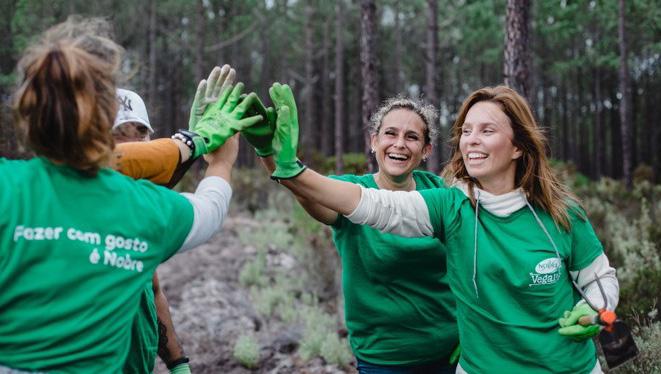
Launching Sigma’s new volunteering Intranet platform in particular International Food Day, Women’s Day, and Pride Month, as well as others related to wellbeing

In 2022, a new volunteering platform went live on our intranet, developed to facilitate the participation of all employees. This was key in our return to face-to-face activities and initiatives after the challenges presented by the COVID-19 pandemic and will contribute to achieving our 2025 goal. The platform is designed for employees to be able to propose, find, or manage volunteering activities at Sigma.

We once again celebrated the Sigma Sustainability Week, in which employees proactively adopt actions in favor of the United Nations Sustainable Development Goals. On this week’s fifth edition, more than 450 employees and their families participated in week-long webinars with experts on environmental, social, and economic issues. In addition, over 108 actions were carried out in favor of the environment and the community, including donations, quality education initiatives, and reduction in plastic consumption, among others.
Every year we commemorate International Food Day. In 2022, more than 1,400 volunteer employees participated in initiatives focused on collecting, transporting, and delivering food to people in vulnerable situations, as well as raising awareness of food challenges such as the fight against malnutrition, hunger, and emergency response.
Internal campaign in Europe to raise awareness around equitable access to healthcare for cancer patients.

31 employees in France and 3 in Italy participated in races to raise funds to fight breast cancer.
During “Pink October” our Aoste brand made donations in conjunction with a local women’s rugby team in France and we collaborated with Cora to donate funds.

We will continue to encourage our employees to engage in volunteering activities. Involvement generates a sense of responsibility and the search to make a positive impact triggering social change alongside the communities we are a part of.



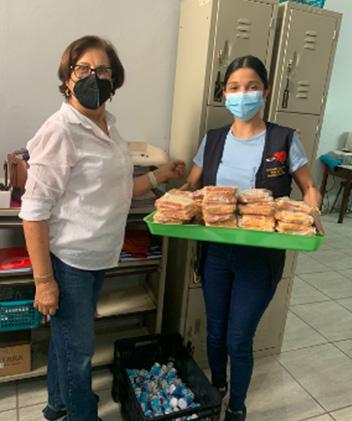

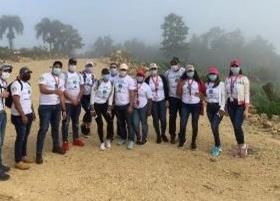
We collaborated as managing partners of the Voluntare association in Europe for the first time to promote best practices and gain visibility of the participating organizations’ needs.
We promote healthy lifestyles through our innovative and high-quality product offering.












3-3: Innovation, research, development, and scientific collaboration
SASB FB-PF-260a.1, FB-PF-260a.2
SDG 2: Goals 2.1, 2.2, 2.4, 2.5, 2.a, 2.c || 3: Goal 3.8 || 8: Goals 8.2, 8.3 || 9: Goals 9.2, 9.4, 9.5
We remain leaders in the market through innovation. We offer our consumers delicious and balanced options.
Our goal and progress
Progress: 1.8x
2025 goal 2x
We drive innovation as a key component to maintaining consumer preference. Our Innovation and Research & Development teams include over 200 specialists, technology centers in Mexico and Spain, 6 pilot plants, and 12 regional research centers. As of 2022, we have more than 40 patents and utility models that protect intellectual property. We also collaborate with academic institutions around the world to enhance our research efforts. These institutions include Tecnológico de Monterrey, Ghent University, Universidad de Burgos, as well as technology centers including the CARTIF Technology Center, ANIA, among others.
One of our main challenges for 2022 was to focus our innovation efforts on the standardization of health and wellness metrics. We also stipulated clear criteria for the categorization of innovative products. During the year we integrated the Innovation Dashboard, a new platform for tracking and monitoring innovation results at Sigma. This tool makes data collection and the management of KPIs by market more efficient.
Our efforts around the Health and Wellness6 portfolio include working on offering better nutritional profiles, functional foods or products with plant-based protein, among others. For example, we adhere to international recommendations and cater to customers seeking a product offering reduced sodium, sugar, and fat.
As part of our sustainability commitments for 2025, we have set a target to double the sales of products launched through the Health and Wellness portfolio compared to 2019. At the end of the year, this platform’s sales grew 1.8 times over the baseline.
Plant-based Frankfurters & Vegwurst sausages


Dehydrated fruit chips
Better Balance - Spain
High in protein and low in saturated fat.
Turkey mortadella

Not fried, no added sugar and made with 100% fruit.
Chicken fillet
No added sugar or saturated fat, with added fiber.


Braedt Balance - Peru
Reduced sodium, gluten free and no artificial colors.
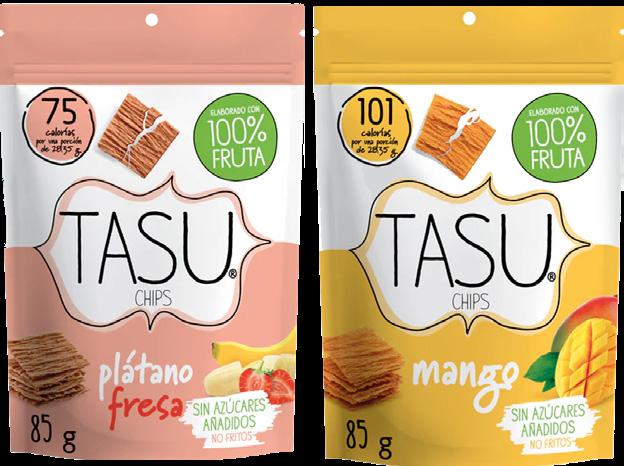
Without added nitrite, low in fat, low in salt.


Some of the main innovation initiatives of 2022 were:
More than 1,700 employees from all operating areas participated, seeking to permeate a culture of innovation.
We held three meetings to foster the exchange of knowledge and experiences around new product categories, market trends, and innovation platforms.



We consolidated information about the company’s launches in the new Digital Innovation Platform to encourage an organized and detailed exchange of ideas and innovation projects throughout the operations.
We documented best practices and considerations for efficient processes in the development of new products.



We continue to empower the team that has developed advanced capabilities and demonstrated leadership in building the company’s innovation culture.
We organize internal webinars with experts to inspire and motivate employees to propose healthier and more balanced products, as well as share practices and learnings across regions and Organizational Units.


We also conducted four internal webinars to discuss new sector trends and advancements with experts.
We trained the Research and Development team on nutrition topics to develop new products for our consumers.
During the year, we also worked on different initiatives to increase the use of recyclable materials in our packaging, as well as to integrating additives in some of our products that improve packaging biodegradability to achieve this process in a period of five to seven years (vs. 500 years for regular packaging). We conducted training workshops with our suppliers to prototype the packaging of the future and collaborated with the marketing team to communicate the use of biodegradable materials.
For more details on these initiatives, please visit the “Circular Economy” subchapter and material topic on page 46.
We were able to take advantage of dairy byproduct products with high nutritional value in Mexico, supported by the technological expertise of the Research & Development team. This required a US$6.6 million investment in infrastructure to produce high-quality whey.
Additionally, in Europe, we signed a biotechnology joint venture with a pharmaceutical company to take advantage of an animal by-product with anticoagulant properties of great interest and potential for the health sector, as it is widely used for human health and in medical practice. We see a double positive effect in this; it will be an additional source of income and there will be a greater use and reuse of raw materials from our production process.
The Product Development Policy, updated in 2021, establishes responsibilities, global guidelines, the method for product design, compliance with local regulations, and the promotion of continuous improvement through the exchange of best practices.


Always seeking to be one step ahead of the needs of our customers and the communities in which we participate, Sigma will prevail as a benchmark in health and sustainability issues in the sector, relying on collaborating with suppliers, research centers, and customers.


FB-PF-260a.2
During 2022, we continued our global strategy of projects focused on developing the food of the future through the launch of our Better Balance brand. This brand has been developed as a global platform, which considers executing products made entirely from plants (vegan), as well as options that only use secondary animal ingredients (vegetarian). In this way, we can cater to the different nutritional profiles that consumers are looking for. “ “
Better Balance plant-based protein options are ideal for incorporating into traditional recipes for a great culinary experience. Learn more about Better Balance products: here



FB-PF-410a.2
We have chosen to develop new products that are environmentally friendly. To achieve this, during 2022, we conducted the first Life Cycle Analysis (LCA) to understand the impact of our offer throughout the production process. The case study was an alternative protein dairy product. In this way, we will strengthen our value chain’s decarbonization strategy at the product level. These studies will give us greater visibility of raw materials and processes that can be optimized to maximize quality and minimize environmental impacts.
We collaborate with entrepreneurs around the world to develop solutions that modernize the food industry. Tastech by Sigma, our open innovation program, seeks to revolutionize the industry through unique and disruptive ideas and products.

More than 900+ startups in 41 countries have participated in the program and the 30 startups with the greatest potential were selected to conduct pilot tests in 6 countries.




Tastech invites entrepreneurs to put their projects to the test in four challenges to transform the way the food that nourishes us is produced, distributed, and commercialized:
Disruptive concepts that improve the consumer experience through new food concepts, purchasing formats and efficient distribution channels.
Foods and ingredients with high protein content, as well as solutions that increase nutritional value and reduce sodium, sugar, and fat content.
Working to make innovation a key driver in market capture across all regions will remain a priority for our team. We will continue offering delicious and balanced options to consumers, unifying and aligning Sigma’s innovative vision.
To learn more about the startups that conducted pilots with Tastech by Sigma in 2022, visit: here

Sustainable processes that enable the use of by-products in the food industry value chain, reduce the carbon footprint of packaging and improve efficiency in transportation, especially refrigerated transport.

Tools and applications for the analysis of consumer trends and the development of new shopping experiences, as well as the optimization of points of sale, logistics or routing and supply chains.


3-3: Quality and food safety || 416-1
SASB FB-MP-250a.2, FB-MP-410a.3, FB-PF-260a.2
SDG 2: Goals 2.5, 2.c || 3: Goal 3.8
We strengthen practices and processes to make our products’ quality a competitive advantage. This involves transforming our internal culture and using controls and technologies to create safe and high-quality products that are favored by consumers.

Our goal and progress
Progress: 94%
2025 goal 100%
The Sigma Quality and Safety Policy, updated in 2021, aims to build a culture and operating standards that enable us to exceed the quality and safety expectations of our consumers and customers.
Percentage of our plants with GFSI-endorsed certification (acquired as of 2018).2-24
We promote, communicate and live by the company’s essential behaviors in relation to quality and food safety at all levels of the organization. In addition, we reinforce this culture with training for new recruits at the manufacturing sites and specific training aligned to the needs of each operation.
We comply with corporate quality guidelines and safety procedures such as GFSI (Global Food Safety Initiative) recognized standards, international food regulations and prerequisite programs.

We establish requirements for the approval, evaluation and development of our suppliers and analyze their performance to prevent the entry of defects into our value chain through strategic projects.
We develop and implement valid and reliable measurement methodologies to verify compliance with our standards in products, processes, and infrastructure.
We promote the implementation of hygienic design principles in the acquisition and renovation of our equipment and facilities to prevent defects and cross-contamination risks, based on international guidelines.

We integrate the fundamentals of quality, safety, legality, authenticity and food defense in the design, development, label declaration, manufacturing, handling and distribution of our products.
Ensuring the accuracy, reliability, and integrity of our traceability system through the implementation of tools that facilitate data collection. Increasing the efficiency of our crisis resolution and management processes.
2-28
We collaborate with organizations that specialize in the development of food safety processes, criteria, and technologies, driving the competitiveness of our industry for consumers’ benefit. Globally, we participate in associations such as the International Association for Food Protection (IAFP) that allow us to share best practices in food supply protection. In Mexico, we are part of the local GFSI working group in charge of promoting food safety actions in conjunction with the National Agrifood Health, Safety and Quality Service (SENASICA). We have also contributed to the integration of GFSI criteria into Mexican regulations under a collaboration model that was later replicated in other countries. In Europe, we work with the European Hygienic Engineering Design Group (EHEDG), participating in training, conferences, and forums designed to strengthen food technologies. We are currently collaborating with the EHEDG on the development of a new global reference standard focused on strengthening safety practices during meat processing.
FB-PF-260a.2
Our plants have robust management systems that allow us to operate under the highest quality and safety criteria. Currently, 94% of our plants7 are certified under GFSI8, the most widely recognized global food safety initiative. We are on track to achieve our goal of certifying 100% of our plants by 2025.
We have the certifications required by the U.S. Food and Drug Administration (FDA) and the U.S. Department of Agriculture (USDA) for plants in Mexico that export to the United States.


Our quality and safety indicator monitoring systems in finished products allow us to ensure we deliver safe products to our customers. As part of our prevention approach, we have environmental monitoring and inspection plans based on each operation’s risks, mitigating them before they affect products. These procedures and the emergency response and crisis management policies integrate country-specific regulations, with consumers as our priority.
We have a central Quality and Safety team that enables knowledge among the different regions, is at the forefront in detecting and deploying new technologies and defines the long-term vision. In each of the Organizational Units, there is a Quality and Safety leader who ensures the implementation of action plans and process optimization. Lastly, at each site there is a representative in charge of quality and safety control in operations.

2-6

We leverage our global supply chain to mitigate risks and concerns related to raw material sourcing to maintain operational continuity. We actively identify alternative materials and use inventory management strategies to mitigate variations in logistics lead times. In addition, risk management practices include supplier diversification by origin, type of raw material and distributor, etc.
Global traceability policies are implemented to ensure that finished products meet the highest standards of quality and food safety. Systems are designed to retain any product within our distribution network, if necessary, avoiding any impact on consumer safety or brand reputation.


All incoming materials go through an inspection process where we review main aspects for a statistical sample based on the pass/fail criteria for each product category. This inspection includes, among other things, physicochemical analyses, microbiological analyses, and compliance with specifications.

Supplier performance is evaluated using scorecards where we review any rejections or near misses and assess trends to establish development or substitution projects.

Our commitment to food quality and safety begins with our supply chain. We work with all of them to deliver reliable products. Through the Sigma Responsible Sourcing Code, launched in 2021, we set out the practices we expect from them, including:



Compliance with all applicable regulations.
Delivering products that meet the quality and safety standards defined by Sigma or GFSI.
Implementing defect prevention controls in production.


Implementing a risk assessment methodology.

Having a food safety plan with a Hazard Analysis and Critical Control Point (HACCP) system, following Codex Alimentarius guidelines.


Uphold willingness to validate quality and safety management systems through audits aligned with international criteria and Sigma policies.
This year we also improved our crisis response support for safety issues, including the implementation of a system to identify and strengthen the capabilities of the central Quality and Safety team. Along with these improvements, risk prevention and mitigation indicators were implemented, leading to the creation of Quality and Safety indicator dashboards to map global trends.

FB-PF-260a.2
To have a supply chain with food quality and safety, we require our suppliers to have an international certification endorsed by GFSI, or to comply with Sigma’s internal standards. We also have development projects for strategic suppliers to improve their practices.

FB-MP-410a.3
We promote practices aligned with animal welfare in the supply chain. Building on the progress of our European operations, we will establish the Global Animal Welfare Policy covering animal welfare practices for our operations, including that animals in our supply chain be found:
Free from thirst, hunger, and malnutrition

Free from physical or thermal discomfort
Free from pain, injury, or illness

Free to express one’s own patterns of behavior

Free from fear and anguish
Our operations in Campofrio Frescos and Bureba plants in Spain and Rio Maior in Portugal, have the Welfair® certification from IRTA and Neiker-Tecnalia, which is based on the Welfare® Quality and AWIN protocols, considered the highest quality standards in relation to aspects such as feeding, health, and comfort of the animals.
During 2022, Sigma continued to implement the Animal Welfare Protocol in Europe, a process that is externally verified by Bureau Veritas and endorsed with the renewal of the Letter of Conformity for the second year. To date, 66 animal welfare audits have been carried out on suppliers in 8 European countries.

The development and implementation of technologies for the identification of product deviations will be key to our growth in the coming years. To this end, we will pursue:
The use of artificial intelligence in thermal and cooking processes to ensure the optimization of resources in production processes, and in the implementation of validation programs to ensure microbiological lethality in production processes and finished products, ensuring more efficient and safer products.
The use of algorithms to help identify environmental control risks in operations based on historical data and microbiological results.
New laboratory methodologies to make production safety decisions more efficient.

We will also continue to strengthen our internal Quality and Safety Culture to ensure process control and consumer preference for high-quality and safe products.


We implemented statistical quality analysis projects based on customer and consumer complaints. We identified deviation points and addressed them, reducing product complaints in Europe by 40%.
We installed systems to detect suboptimal coding on product packaging. By identifying them in advance, we avoided rejections in the distribution and sales process.
The Welfair® animal welfare seal was extended to all Campofrío sliced cooked ham products. This means that the raw material obtained complies with the highest animal welfare standards.






3-3: Healthy and nutritious foods || 417-1

SASB FB-PF-260a.2
SDG 2: Goal 2.c || 3: Goal (all)
Our goal and progress
For markets without a local mandatory labeling regulation as of 2018: Packaged products portfolio with nutritional facts on label.
2025 goal 95% Progress 90%
We offer a distinctive product portfolio that satisfies our consumers’ tastes and nutritional needs. We maintain close communication with customers and end consumers to learn about their preferences and incorporate them into our offerings. With this realization, we have product lines reduced in sodium, fat, and/or sugar. In addition, we have research and development initiatives focused on continuously improving the nutritional profile of our products. During 2022, we developed products that also comply with the various applicable nutritional regulations and standards of the regions in which we operate.
100% OF OUR NON-INDULGENT PRODUCTS COMPLY WITH INTERNAL SUGAR LEVEL STANDARDS.

During 2022, we expanded and strengthened our Global Nutrition and Health Unit (NHU), focused on:
Driving a new generation of nutrition standards and goals for Sigma’s products
Strengthening the offer to consumers with products that help them to eat a healthy diet

Implementing a unique system for the design and management of nutritional profiles
Raising awareness of nutrition and health topics among internal teams and external audiences
Identifying and materializing scientific research opportunities with leading institutions
Strengthening educational campaigns in favor of healthy lifestyles among our stakeholders
The NHU team keeps us up to date on new global nutrition trends and enables us to stay ahead of our stakeholders’ expectations.
2-23, 2-24
We updated the Global Nutrition and Health Policy during 2022 to guide and achieve our nutrition goals. This is based on NHU’s four main pillars:
Improve nutritional profiles Support innovation projects, build collaborations, and scientific communication
Nutritional base (Strengthen)
Promote a new generation of nutrition standards and targets for Sigma’s products based on dietary references and scientific evidence.
Innovation in health (Expand)
Strengthen the offer of products that contribute to a healthy diet through the co-development of new concepts and the support for the exploration of emerging categories with added nutritional value.

Nutritional science (Anticipate)

Execute scientific research with leading institutions in Health and Nutrition that can generate new knowledge and unlock opportunities.
Nutritional communication (Educate)



Promote nutrition education and position Sigma as an active player in Nutrition.

In 2022, NHU provided training to the Snack’in For You and Better Balance teams on basic nutrition topics to strengthen their knowledge and sensitize them to the importance of developing products with superior nutritional profile.
80+ PRODUCTS WITH IMPROVED NUTRITIONAL PROFILES DURING 2022.

2-28

We promote healthy diets by empowering consumers in their decision making through responsible and transparent marketing practices. We seek to provide clear information about our products and disclose their nutritional value, in addition to complying with local regulations. The nutritional information we communicate adheres to international best practices, including Codex Alimentarius and the U.S. Food and Drug Administration (FDA).
Check out new recipes on the website: here

Constantly improve our portfolios’ nutritional profiles guided by international standards and best practices, as well as the findings and feedback received from customers and consumers, both in core categories and in new opportunities for growth.

Our goal for 2025 is that at least 95% of the products we market in countries without local regulation will communicate nutritional information aligned with best practices.
3-3: Ending food waste || 306-2
We achieved a 16% reduction in food waste compared to 2018. In Mexico alone, there was a 50% reduction in the mom-and-pop stores and Convenience sales channels. This includes products that are close to reaching their expiration date on store shelves and waste from the production process. We also trained the members of our sales team to implement a culture of waste reduction and recovery. Our ambition for 2025 is to reduce food waste by one-third and prevent it from ending up in landfills.
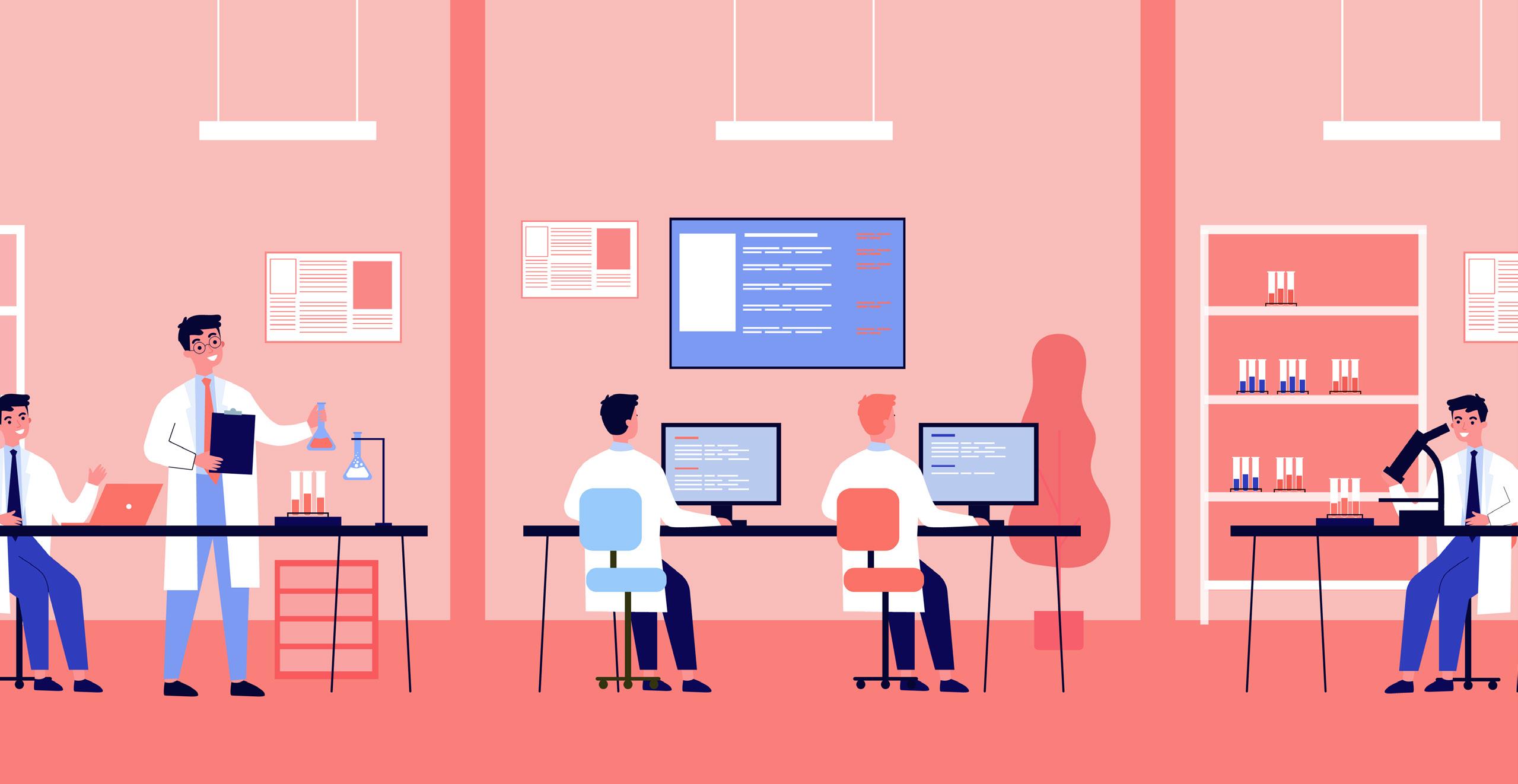
We rely on information technologies to adjust production levels to demand projections. In the Convenience channel, we developed a commercial platform for cellphones, leveraging the product replenishment model to support day-to-day operations. The algorithm was designed to optimize product sales and reduce loss by cross-referencing data on waste volume. The generated information is used to make recommendations to the customer on inventory management and to increase their sales. We also work closely with customers and employees in Mexico to better understand and adapt to consumer purchasing patterns to place the right amount of food on the shelf.
Our understanding of supply and demand patterns, as well as the optimization of sales volume, is complemented by practical packaging solutions we implement to maintain food safety and protect its properties.


We operate our plants under the highest quality and efficiency standards to minimize waste in the production process. Our Product Development Policy is key to achieving our objectives.
We collaborate with associations and food banks to contribute to the community and prevent food waste. Between 2015 and 2022, we have donated more than 21,100 tons, equivalent to more than 175 million servings. This keeps us on track to reach our goal of donating at least 25,000 tons of food in a decade.
We will continue to reinforce our operations with the best and most innovative technologies to become more efficient. In addition, we will continue to implement projects in alliance with strategic customers to optimize product sales while we train our employees to attack new problems in a better way and with more tools.
We continue to work closely with our customers and associates to get the most out of our food. In Mexico, we managed to reduce +6,000 tons of waste in our convenience and mom-and-pop channels compared to 2020. We extended our Optimal Ordering program with our self-service channel customers, achieving a 50% reduction in waste with the customers with whom we collaborate. In addition, we conducted pilot tests with our customers from specialized markets and small retail stores in the Western region, where we were able to reduce food waste by half, which could be scaled up in the following years.

Reducing food waste has a positive impact on our entire value chain and leads us to use only the resources necessary to satisfy our customers.

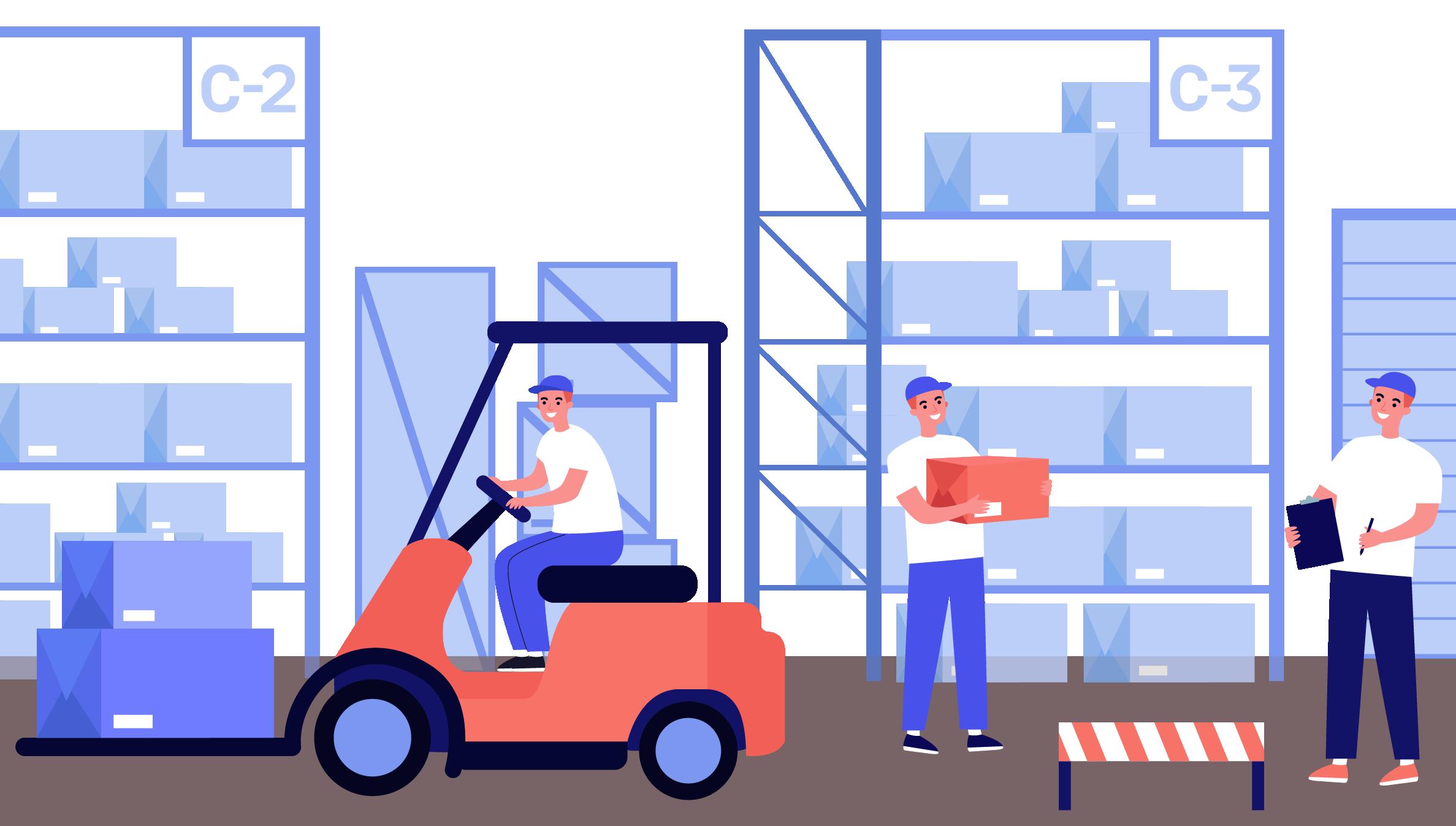
We create economic and social value through strategic practices and share them to stimulate development and strengthen our value chain.











3-3: Sustainable procurement and value chain management
SASB FB-PF-430a.1
SDG 8: Goals 8.2, 8.4 || 12: Goals 12.2, 12.3, 12.5, 12.6
We manage the value chain through a dedicated team that proactively promotes best practices with our suppliers.
Our goal and progress
Percentage of purchases from suppliers with enhanced sustainability practices.
2025 goal 80% Progress: 8%
2-6, 2-28, 308-2, 414-2
To strengthen our value chain in environmental, social and governance aspects, we have identified strategic suppliers. These were selected based on purchasing volume, covering 80%, and for being critical components for our products, such as meat raw materials, dairy products, ingredients, and packaging.

We promote sustainable practices in our supply chain and have been members of the CDP Supply Chain since 2020. This enables us to evaluate our strategic suppliers through questionnaires and lay the groundwork to jointly strengthen their practices. In 2022, we evaluated 145 suppliers, up from 37 in the previous year, representing 35% of our raw material spending. These suppliers answered CDP Supply Chain questionnaires, which helped us identify areas for improvement in Climate Change, Water Security, and Forests.

We have developed a responsible supply questionnaire on social and governance issues based on international rating agencies´ best practices (e.g. S&P CSA). This questionnaire is used to evaluate the most relevant suppliers of our company. To date, we have received responses from 146 suppliers, representing more than 41% of our raw material purchases. These efforts bring us closer to our commitment to make more than 80% of our annual purchases from suppliers who demonstrate responsible practices.
Our commitment is to extend sustainability integration to our suppliers. By involving more suppliers in this initiative, we will be better prepared to address climate and water risks, while ensuring the wellbeing of people and communities.
CDP raised Sigma’s Supplier Engagement Rating (SER) to “A-”, two steps above the 2021 rating.

Agreements with our producers in France allow us to use water treatment plant by-products to produce bio-fertilizers for 60 hectares.
We have the ISO 20400 sustainable procurement certification of non-meat raw material in Europe, resulting from supplier evaluations and sustainability training provided to our procurement team.
In our Dairy Development Program in Costa Rica, we work with 250+ dairy farms to encourage the development of small producers by offering specialized technical assistance. The trusting relationships we have developed enable us to nurture our suppliers’ growth and strengthen the supply chain.

We support environmental management projects for dairy producers, including the responsible use of resources, regenerative livestock practices, organic fertilizer production, and energy efficiency. 20 farms have received the Blue Ecological Flag distinction, awarded by the local government to recognize initiatives focused on ecosystem protection and climate change.
Additionally, we promote organic waste use and the implementation of rainwater harvesting systems through advice, training, and action plan development.
This Code reinforces our commercial relationship with suppliers and promotes the implementation of best practices to develop a shared vision of sustainability. We invite all participants in our value chain to read, understand, and adopt the practices described within the document.

• Provide safe and reliable products with high quality standards
• Audit and risk assessment
Health & Nutrition

• Adhere to applicable laws
• Avoid fraud
• Prevent money laundering
• Foster anti-corruption activities
• Maintain confidentiality
Shared Value
• Protect intellectual property
• Promote the implementation of international standards
• Value chain traceability
• Promote animal welfare
• Avoid conflicts of interests


• Compete with integrity
• Guidelines for gifts and business hospitality
• Prioritize transparency
• Contribute to the communities
• Protect personal data
• Human rights
• Safe environment
• Healthy environment
Wellbeing
Environment
• Environmental protection
• Waste management and disposal
• Water management
Responsible Sourcing Code: here
• Diversity and inclusion
• Harassment prevention
• Environmental impact mitigation

• Resource conservation and forest management
We want to promote supplier evaluations by closely monitoring their efforts and progress, leveraging the company’s tools and expertise. Likewise, we will continue to add more members every day to strengthen the value chain.
2-28, 2-29
In 2021, Sigma joined the United Nations Global Compact. In 2022, we reaffirmed our support for the 10 Principles. This report serves as our disclosure on the achievements regarding the UN Compact Principles’ implementation in our operations.

We actively participate in 130+ local, national, and international associations and alliances.
37
8 Research and Education: 28

We are committed to offering our clients the best service and personalized support. We maintain open communication channels with them to understand their needs and concerns. We position our products in more than 670,000 points of sale worldwide through our long-term relationships.
Modern Channel
Traditional Channel
Foodservice Channel
E-commerce Channel
Supermarkets, hypermarkets, and convenience stores
Mom-and-pop stores and specialized markets
Hotels, restaurants, movie theaters, industrial cafeterias, hospitals, others
Grillhouse by Sigma, Foodservice Go, and Convy
Since 2014, our Excellent Client Program in Mexico has promoted the development of our clients in the Traditional Channel through consulting and providing support to equip points of sale:
54,500+ new and energy-efficient refrigerators installed at our clients’ stores to modernize the point-of-sale, maintain the cold supply chain, and save energy.


170,300+ promotions offered in products delivered in 2022 to more than 18,600 of our Traditional Channel clients.
In Mexico, our Service Center closely monitors the needs and concerns of our clients and consumers through an omni-channel platform.

290,000+ contacts made with consumers and clients in 2022.
92% of inquiries are resolved on the first contact.
90% of clients and consumers surveyed affirm they are promptly and efficiently served.

SDG 17: Goals 17.15, 17.17
Sigma actively contributes to eradicating hunger through strategic partnerships with food banks and associations that make our product donations to vulnerable communities more efficient. Between 2015 and 2022, we have donated more than 21,100 tons of food, equivalent to more than 175 million portions.

Our goal and progress
Tons of food donated (since 2015).
Progress: 21,100 tons
2025 goal
25,000 tons
Our operations and volunteers in Belgium and the Netherlands donated food during the December holidays.
Volunteers participated in initiatives alongside different food banks in Madrid to collect food at supermarkets that set up collection centers for donations from their customers. The “Operation Kilo” was also carried out to collect non-perishable food.

Financial and in-kind donations were allocated to foundations and public charity organizations, such as shelters for domestic violence victims, and nursing homes, to mention a few.

24 volunteers donated to “Les Restaurants du Coeur”. This made it possible to distribute more than 190 servings of prepared food to people in vulnerable conditions.
8 tons of food, basic products, and medicine were collected to donate to Ukraine. We also collaborated with various food banks in the country to collect food.
Support for 110,000+ people in the country’s communities in most need, through donations to 36 food banks under an efficient food rescue model to combat hunger and malnutrition among the most vulnerable population.
A food donation was made to patients at San Felipe Hospital, where 20 collaborators participated in providing snacks.
Our
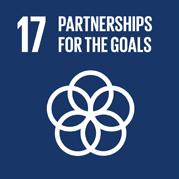


purpose and ethical principles guide the continuous strengthening of the standards, policies, and procedures that regulate us, to establish a structure that promotes sustainable value creation in the long term.











US$652 million EBITDA
1.7 million metric tons of food sold



11 brands with net sales greater than US$100 million



9.1% compound annual revenue growth rate 2010-2022



We continuously train our employees on our Global Code of Conduct. These trainings cover topics such as the prohibition of unfair competition, legal compliance, prevention, and management of conflicts of interest, anticorruption practices, protection of data privacy and intellectual property, among others.
In addition to the trainings, we have deployment programs and internal communication campaigns through emails, our intranet, and posters to improve knowledge and adherence to the Global Code of Conduct’s principles.


We ask our suppliers and business partners to act and behave within the framework established by the general principles included in the Code.
2-23
We live a culture of integrity
• Adhere to applicable regulations
• Abide by honest business practices
We foster a safe and dignified environment
• Value and respect each other
• Prevent harassment
We commit to our partners
• Promote quality and food safety
• Collaborate with our partners ethically and legally
We manage information with responsibility
• Follow safety procedures
• Ensure data confidentiality
• Respect intellectual property rights

• Avoid conflicts of interest
• Safeguard company resources
• Promote a safe workplace
• Guarantee human rights
• Compete with integrity
• Ensure transparency in communication
• Avoid insider trading
• Report clear and objective information
Among the companies with the best reputation: Sigma’s operation in Spain and Mexico were recognized as one of the top 100 companies with the best corporate reputation, according to the Merco Companies index. They were placed in 19th and 32nd place, respectively, in each country’s overall ranking. In addition, Sigma Spain ranked second in the food sector and fourth in the ESG specialized index of the food sector. Sigma’s operation in Mexico ranked sixth in the food sector.
2-16, 2-25, 2-26
The company offers a Transparency Helpline through which cases of non-compliance with Sigma and ALFA policies, as well as the Global Code of Conduct. The operation and contact channels for the Helpline are continuously disseminated through the websites of ALFA and Sigma, the company’s intranet, internal emails, and posters. In addition, the helpline is referenced in company paperwork, such as orders, requests for estimates, and invoices.

This helpline operates 24 hours a day, 365 days a year, via the website, e-mail, SMS, or toll-free numbers
During 2022, 876 complaints related to Sigma were made through the Transparency Helpline.
15% of these complaints are currently under investigation and 85% were resolved during the year.
36% were deemed invalid as the assessment showed they had no merit, and remediation plans were implemented for the remainder.
In 58 cases, employees were dismissed from Sigma, and in one case, a business vendor relationship was terminated.

buzon@alfa.com.mx
For more information, review the 2022 ALFA Annual Report here
Monitoring process for reports received in the Transparency Helpline related to Sigma
Complaint is received
Channels
• Toll-free multi-language numbers in 18 countries
Classification
ALFA Internal Audit
• Translates and/or transcribes message
• Reviews and classifies message
Allocation
ALFA Internal Audit
• Analyzes message content
Investigation
Conclusion
• Website
• SMS
• Assigns responsible party within Internal Audit
• Assigns responsible party to carry out investigation
Sigma / ALFA Internal Audit
• Plans and conducts investigation
• Documents findings and conclusions
• Establishes and executes action plans
• Review and classify each message
• Assigns an Internal Audit responsible

ALFA Transparency Committee
ALFA Internal Audit
• Assesses and offers feedback on the results of the investigation
• Endorses action plans
• Reviews results of the investigation and action plans
• Authorizes closing of the investigation
2-12, 2-13
Within Sigma, there are more than 260 employees who, in addition to their day-to-day responsibilities, actively engage in promoting our sustainable efforts (the Sustainability Community). These efforts are led by the Chief Research, Innovation, and Sustainability Officer, who regularly reports on progress and challenges to the Company’s Executive Committee and Advisory Board.
The Central Sustainability Department, along with the Sustainability Community, coordinates and monitors the Strategy’s implementation. At the forefront of each of the 2025 Sustainability Commitments, there is also a global leader in charge of executing the Strategy. These global leaders work with local teams to generate initiatives in all regions.
2-15, 2-23, 2-24, 2-27
The policies and procedures governing our employees’ and business partners’ ethical conduct are developed and approved by the General Management. As an ALFA company, Sigma adheres to the group’s corporate policies.
ALFA’s regulatory framework comprises over 50 policies, from which support documents such as process and procedure manuals are derived to guarantee the correct understanding and approach to the business’ operation. Among the main topics covered by these policies are:








All Organizational Units must be aligned with the regulatory framework established in ALFA’s Policies. Business policies may have different conditions, but never exceed these corporate guidelines.


At ALFA, the Code of Ethics, Anti-corruption Policy, and the Conflicts of Interest Policy establish the standards of conduct the company expects from its subsidiaries and employees. These policies ratify the company’s commitment to operate in an honest manner, in strict compliance with applicable laws, avoiding conflicts of interest, and with zero tolerance for corruption.
ALFA’s Code of Ethics reflects the philosophy and fundamental principles for its operation. ALFA’s AntiCorruption Policy focuses on compliance with applicable anti-corruption legislation in the countries where it operates. This includes adherence to the U.S. Foreign Corrupt Practices Act (FCPA), which establishes the basic rules and framework for preventing, detecting, investigating, remediating and, where appropriate, sanctioning acts of corruption. The Conflicts of Interest Policy defines the general guidelines to identify and mitigate those situations that could lead to conflicts of interest in a timely manner.
ALFA fosters respect and promotes Human Rights through its Human Capital policies that are aligned to the programs of the International Labor Organization. These reject all acts of discrimination, child labor or exploitation, forced labor, abuse, and coercion, as well as threats and impediments to free union association or collective bargaining for employees.
ALFA Code of Ethics: here
Anticorruption Policy: here


2-23, 2-24
At Sigma we have a series of policies in place that establish the principles to include environmental, social, and corporate governance (ESG) elements in our operations and behaviors across the organization. These policies include:
Global Code of Conduct


Responsible Sourcing Code










Environmental, Social, and Governance Policy
Water Management Policy

Nutrition Policy
Quality and Food Safety Policy
Cybersecurity Policy

Tax Policy
Product Development Policy
Prevention of Harassment and Discrimination Policy
Greenhouse Gas Emissions Policy

Responsible Engagement in Public Policy Development
Anti-Corruption Policy
Marketing Policy
Conflicts of Interest Policy
Sigma Policies: Available here

FB-FR-230a.2, FB-FR-430a.3
The identification of our business and sustainability risks, as well as their management and mitigation, involves different functional areas across various geographies. The risks considered by these processes include risks related to supply, operations, markets, sales, brands, reputation, strategy, human capital, information technology, finance, regulations, standards, as well as the evolution of environmental, social, and corporate governance factors, among others.
The mitigation plan for each of these considers its nature, probability, and potential impact, as well as the timing and those responsible for their management. The most relevant risks we have identified include:
Animal disease outbreaks affecting raw material supply
Increase in raw material costs, energy costs, among others
Cyberattacks and events that impact the operations’ continuity for technological reasons
New environmental regulations on carbon emissions and limitations on the use of plastic
Competition in food industry
Labor shortages and delay of raw material shipping
Vulnerability of Internet of Things (IoT) systems
Rezoning of environmental protection areas and in wastewater extraction, treatment, and disposal
Changes in labeling and nutritional profiles regulations
Alternative supplier development, inventory sourcing (6 months).
Revenue management, operational efficiencies, inventory control, supplier development, strategic procurement, and financial hedging.
Establish a dedicated team, awareness campaigns and employee training, continuous update of security tools.
Working together with suppliers, developing new packaging, and investing in technology to reduce carbon footprint.
Differentiation of value offer to our consumers.
Diversification in procurement sources, and revenue management, and optimization of processes into operations.
Global strategy and governance definition, perform diagnostic evaluations in all sites, and network segmentation.
Systems for more efficient water use and reuse, campaigns to raise awareness on the proper use of natural resources.
Engagement with stakeholders, including industry, government, and the community, nutritional profile improvements and brand launches with niche markets.

2-12
We actively manage our exposure to major risks, provide recurring reviews, and take timely actions to mitigate them. Some of the emergent risks we have identified include:

Continuous training and keep updating our security tools.
Work together with suppliers to assess our environmental impact and find new opportunities for collaboration. Continue to pursue environmental investments to meet or even exceed applicable regulations.
At ALFA, every subsidiary is responsible for identifying and managing risks, including ESG risks. This enables the company to ensure that the initiatives and mitigation strategies are optimized depending on the sector. Afterwards, ALFA consolidates the information for each Business Unit and communicates it to the Audit Committee of the ALFA Board of Directors for follow-up. Since 2021, the Audit Committee of ALFA’s Board of Directors includes ESG risks assessment in their regular meetings.
Sigma CEO MBA Wharton
Eugenio Caballero
CEO Mexico MBA Harvard







Sergio Ramos
CEO Latin America MBA Universidad de Texas en Austin
Roberto Olivares
CFO - Finance MBA Duke
Beatriz Patrón**
CTCO - Talent & Culture MBA IPADE

Ricardo Doehner
CEO Europe MBA Michigan

Jesús Lobo
CEO USA MBA Cornell University
Gerardo Cárcoba
CEO Foodservice MBA DUXX
Gregorio de Haene
CRISO - Research, Innovation, and Sustainability MBA ITESM
Daniel Alanís
CGO - Growth MBA & Msc. Mechanical Engineering University of Michigan
Alejandro Suárez
CIO - Information Technology Master in Operations Research George Washington University
** Beatriz Patrón assumes responsibility for CTCO, previously held by Ernesto Gómez. The changes were effective as of April 2023.
2-9
The Sigma Advisory Board was formed during the first quarter of 2022 to bolster capacity and generate longterm value. The company undertook a search and selection process to retain an extraordinary group of 13 talented individuals with broad backgrounds and outstanding track records, as well as character and integrity; 62% are independent. Their areas of expertise include Strategic Planning, Finance, Operations, Consulting, Entrepreneurship, Private Capital, Sustainability & ESG, Healthcare & Nutrition, and Retail.
María Teresa Arnal*
Diego Calderón
María Eugenia Casar*
Juan Enriquez*
Álvaro Fernández
Armando Garza
Brenda Garza
Ángel Losada*
Eduardo Padilla*
Anthony Pralle*
Alejandro Ruiz
Ricardo Saldívar*
Silvia Sonneveld*
Entrepreneur; 25+ years of experience in Tech. Google, Twitter, and Microsoft
Proprietary Independent
Former Assistant Executive Director at the World Food Program, UN
Chairman and CEO - Biotechonomy, LLC
President – ALFA
Chairman of the Board of Directors – ALFA
Proprietary Independent
Executive President and Chairman - Grupo Gigante
Former CEO – FEMSA
Former Partner and Managing Director – Boston Consulting Group (BCG), Consumer and Operations in Spain
Proprietary Independent
Former CEO and President - Home Depot Mexico
SVP Corporate and Nutrition Strategy – DSM
62% of the Board is independent
31% of the Board are women
2-9, 2-15, 2-19, 2-26
As part of ALFA, we follow the corporate governance guidelines established by its Board of Directors, whose goal is to ensure that decisions regarding the company’s strategy are consistent with the highest integrity, transparency, and value creation standards. ALFA adheres to the Code of Principles and Best Corporate Governance Practices (CMPC), which has been in force in Mexico since 2000.
This Code was developed at the initiative of the Mexican securities market authorities, and its purpose is to establish corporate governance principles to enhance investor confidence in Mexican companies.
Companies whose stocks trade on the Mexican Stock Exchange must disclose the extent to which they adhere to the Code of Principles and Best Corporate Governance Practices. This is done annually by responding to a questionnaire, which is available to the public through the Mexican Stock Exchange’s web site.
The following is a summary of ALFA’s corporate governance as stated in the May 2022 questionnaire, with any pertinent information updated:
A. The ALFA Board of Directors comprises twelve regular members who have no alternates. Of this number, eight are Independent, two are Related Patrimonial Board Members, one is an Independent Patrimonial Board Member and, lastly, one lacks a specific classification for being the CEO of a public limited company in whose board of directors our President participates. ALFA’s annual report provides information on all the Board’s members, identifying those who are independent and the Committees in which they participate
B. Three Committees assist the Board of Directors in carrying out its duties: Audit Committee, Corporate Practices Committee, and the Planning and Finance Committee. Board members participate in at least one committee each. All three committees are headed by an independent board member. The Audit Committee and the Corporate Practices Committee are formed exclusively by independent directors
C. The ALFA Board of Directors meets six times a year. Meetings of the Board can be called by the Chairman of the Board, the President of the Audit Committee, the President of the Corporate Practices Committee, the Secretary of the Board, or by a group of at least 25% of its members. At least one of these meetings is dedicated to defining the company’s medium and long-term strategy
D. Members must inform the Chairman of any conflicts of interest that may arise and must abstain from participating in the corresponding deliberations. Average attendance at Board meetings was 95.83% during 2022
E. During much of tax year 2022, meetings of the ALFA Board of Directors, the Audit Committee, the Corporate Practices Committee, and the Planning and Finance Committee were held in a hybrid format, due to the COVID-19 pandemic. Videoconferences allowed the Board and committee members to interact effectively given the availability of audio and video features

F. The Audit Committee studies and issues recommendations to the ALFA Board on matters such as the selection and determination of fees to the independent auditor, coordinating with the internal audit area of the company, and studying accounting policies, as well as the review of environmental, social, and governance matters, among other functions
G. ALFA has internal control systems whose general guidelines are submitted to the opinion of the Audit Committee. In addition, the independent auditor validates the effectiveness of the internal control system and issues the corresponding reports


H. The Planning and Finance Committee evaluates all matters relating to its particular area and issues recommendations to the Board on matters such as feasibility of investments, strategic positioning of the company, alignment of investment and financing policies, and review of investment projects
I. The Corporate Practices Committee is responsible for issuing recommendations to the ALFA Board on such matters as employment conditions and severance payments for senior executives, compensation policy, succession plans, and substitution letters, among others
J. ALFA has a specific department for maintaining an open line of communication between the company and its shareholders and investors. Its purpose is to ensure that investors have the financial information, or any other information they need to assess the development of the company’s activities
The ALFA Audit Committee is in charge of reviewing the company’s environmental, social, and corporate governance matters, as well as those of its subsidiaries.
2-9, 2-11, 2-17
Juan Carlos Calderón
Enrique Castillo Sánchez Mejorada
Francisco Javier Fernández Carbaja
Álvaro Fernández Garza
Armando Garza Sada
Claudio X. González Laporte
David Martínez Guzmán
José Antonio Meade Kuribreña
Alejandro Ramírez Magaña
Adrián G. Sada Cueva
Federico Toussaint Elosúa
Guillermo F. Vogel Hinojosa
Global Director of Employee Experience and Engagement of Sigma
Managing Partner of Ventura Capital Privado
CEO of Servicios Administrativos Contry
President of ALFA
Chairman of the Board of ALFA
Chairman of the Board of KimberlyClark México
Founder and Managing Director of Fintech Advisory Inc.
Independent Advisor
CEO of Cinépolis CEO of Vitro
Chairman of the Board and CEO of Grupo Lamosa
Chairman of the Board of Grupo Collado and Exportaciones IM Promoción, Vice-Chairman of the Tenaris World Council
Sustainability, Social Responsibility
Finance
Finance, Commercial and Investment Banking, Insurance and Bonding.
Industrial, Food and Beverage, Petrochemicals and Telecommunications Sector.
Industrial Sector, Food and Beverages, Petrochemicals, Telecommunications and Strategic Planning.
Finance and Consumer Products Sector.
Finance, Investments and Telecommunications.
Finance, Treasury, Foreign Affairs, Social Development, Energy and Strategic Planning.
Strategic Planning, Operations, Audiovisual Content Production and Distribution, Economic Analysis, Public Policy Evaluation.
Administration, Finance, Strategic Planning, and Mergers & Acquisitions.
Industrial Sector
Administration, Finance, Strategic Planning, and Mergers & Acquisitions.

Carlos Jiménez, Senior Vice President of Legal and Corporate Affairs at Alfa, serves as Secretary to the Board.
IN MEMORIAM
José Calderón Rojas
Sigma makes a special acknowledgement and is grateful for his great contribution as a member of the Board from 2005 to 2022.
Energy - 2016
Energy consumption within the organization (million GJ)
Total consumption of fuels from non-renewable sources (million GJ)
Diesel
Fuel oil
Gasoline
LP gas
Natural Gas
Total consumption of fuels from renewable sources (million GJ)
Total electricity consumption (million GJ)
Biomass Traditional generation Generation from cleaner or renewable sources
Energy intensity ratio of the organization (GJ / ton of food)
Water and effluents - 2018
Water withdrawal
Total water withdrawal from all areas (million m3)
Groundwater
Third-party water
Total water withdrawal from all water-stressed areas (million m3)
Groundwater
Third-party water
Water use intensity ratio (m3 of water withdrawn / ton of food)
Organization’s water use intensity ratio (m3 of water withdrawn / revenue in millions of USD)
Emissions - 2016
Direct (Scope 1 emissions), CO2 equivalent (thousands ton CO2e)
Energy indirect (Scope 2 emissions), CO2 equivalent (thousands ton CO2e)
Other indirect (Scope 3 emissions), CO2 equivalent (thousands ton CO2e)
GHG emissions intensity ratio of the organization (ton CO2e / ton of food)
Organization’s GHG emissions intensity ratio (ton CO2e / revenue in million USD)
1 Excluding emissions from divested assets, the Vernoux and Monein plants in France, as well as from available-for-sale assets, which include operations in Belgium and the Netherlands. These represent less than 5% of total emissions.
Scope 3 emissions by category (thousand tons CO2e)
1. Goods and services purchased
2. Capital goods
3. Fuel and energy activities
4. Transportation and distribution during the upstream phase
5. Waste generated in operations
6. Business travel
7. Employee commuting
8. Leased assets during upstream phase
9. Transportation and distribution during downstream phase
10. Processing of products sold
11. Use of products sold
12. End-of-life treatment of products sold
13. Assets leased during the downstream phase
14. Franchises
15. Investments
Scope 3 total emissions
Waste - 2020 GRI 306
Waste from operations 2022
Total waste generated (ton)
Grease and sludge
Urban solid waste
Paper and cardboard
Wood Plastics
Metal
Other
Waste diverted from disposal (ton)
Hazardous waste
Processing for reuse
Recycled
Other valorization operations
Non-hazardous waste
Processing for reuse
Recycled
Other valorization operations
Waste destined for disposal (ton)
Hazardous waste
Incineration (with energy recovery)
Incineration (without energy recovery)
Transfer to landfill
Other disposal operations
Non-hazardous waste
Incineration (with energy recovery)
Incineration (without energy recovery)
Transfer to landfill
Other disposal operations
2 From 2021 to 2022, we improved the way in which we measure and account for our waste. Therefore, the variations between categories are significant. We believe that in the coming years, our figures’ comparability will improve, and variations will be more representative, as we will be measuring with the same level of detail and under the same criteria as this year (2022).
Food waste 2022
Total waste generated (ton)
Total waste generated (ton)
Total waste generated (ton)
Waste destined for valorization (ton)
Non-hazadous waste
Other valorization operations
Waste destined for disposal (ton)
Non-hazadous waste
Other valorization operations
3 Recovered food waste is sent for use as pet food or other animal feed, in rendering plants or as energy.
GRI 2 2-7
General disclosures - 2021
Employees
Total employees (No.)
Employees by gender
Women
Men
Not disclosed
Employees by region
Mexico
LATAM Europe USA
Employees with permanent contract
By genderWomen
Men
Not disclosed
By region
Mexico
LATAM Europe
USA
Employees with temporary contract
By genderWomen
Men
Not disclosed
By region
Mexico
LATAM Europe
USA
Employees with full-time contract
By genderWomen
Men
Not disclosed
GR1 2
General disclosures - 2021
Mexico
LATAM Europe USA
Employees with part-time contract
By gender
By region By region
Women
Men
Not disclosed
Mexico
LATAM
Europe USA
GR1 401
401-1
Employment - 2016
New employee hires and employee turnover
New employee hires (No.)
New employee hires by gender (No.)
Women
Men
New employee hires by age (No.)
Below 30 years
Between 30 and 50 years
Above 50 years
New employee hires by region (No.)
Mexico
LATAM Europe USA
New employee hires by category (No.)
Operational employees
Administrative employees
Executive employees
Employee turnover (No.)
Employee turnover by gender (No.)
Women
Men
401-3
Employee turnover by age (No.)
Below 30 years
Between 30 and 50 years
Above 50 years
Employee turnover by region (No.)
Mexico
LATAM Europe USA
Employee turnover by category (No.)
Operational employees
Administrative employees
Executive employees
Turnover rate
Turnover rate by gender
Women
Men
Turnover rate by age
Below 30 years
Between 30 and 50 years
Above 50 years
Turnover rate by region
Mexico
LATAM Europe USA
Turnover rate by category
Operational employees
Administrative employees
Executive employees
Parental leave
Women
Employees who have taken parental leave (No.)
Employees who have returned to work after parental leave (No.)
Return to work rates of employees who took parental leave (%)
Men
Employees who have taken parental leave (No.)
Employees who have returned to work after parental leave (No.)
Return to work rates of employees who took parental leave (%)
Total
Employees who have taken parental leave (No.)
Employees who have returned to work after parental leave (No.)
Return to work rates of employees who took parental leave (%)
Occupational health and safety - 2018
Work-related injuries
Deaths due to occupational accidents (No.)
Fatality rate (fatalities per million hours worked)
Recordable occupational injuries (No.)
Injury rate (recordable occupational injuries per million hours worked)
Hours worked (millions of hours)
Training and education - 2016
Average hours of training per year per employee
Average number of training hours per employee during the reporting period (No.)
Percentage of employees receiving regular performance and career development reviews
405-1
Diversity and equal opportunity - 2016
Diversity of governance bodies and employees
Total employees (No.)
Below 30 years
Between 30 and 50 years
Above 50 years
Operational employees
Below 30 years
Between 30 and 50 years
Above 50 years
Administrative employees
Below 30 years
Between 30 and 50 years
Above 50 years
Executive employees
Below 30 years
Between 30 and 50 years
Above 50 years
Non-discrimination - 2016
406-1
Incidents of discrimination and corrective actions taken
Cases of discrimination during the reporting period, registered through formal mechanisms (No.)
Cases still under evaluation (%)
Status
Evaluation completed
Corrective actions taken
Cases that have already concluded the evaluation (%)
Cases evaluated and dismissed because the evaluation showed no merit (%)
Cases evaluated with remediation plans in progress (%)
Cases resulting in employee termination (%)
Cases where contracts with third parties have been terminated or not renewed (%)
Other remediation actions (%)
Marketing and Labeling - 2016
Requirements for product and service information and labeling
Is the reporting organization required to report relevant information on product labels?
Types of information required by the organization’s procedures for product and service information and labeling (%)
Procurement practices - 2016
Proportion of spending on local suppliers
Procurement budget spent on local suppliers (%)
Supplier environmental assessment - 2016
Negative environmental impacts in the supply chain and actions taken
Suppliers assessed for environmental impacts (No.)
Supplier social assessment - 2016
Negative social impacts in the supply chain and actions taken
Suppliers assessed for social impacts (No.)
[4] Considering raw material suppliers, as established in our Responsible Sourcing commitment.
The purpose of this Sustainability Report is to provide clear and transparent information to our stakeholders on our sustainability priorities, as well as the results of the environmental, social, and governance initiatives implemented over the course of the year.
This is Sigma Alimentos, S.A. de C.V.’s twelfth Annual Sustainability Report, a subsidiary of Alfa, S.A.B. de C.V., and covers the period from January 1st to December 31st, 2022.
In the preparation of this 2022 Report, we included the information of all facilities over which we have operational control. In calculations for the 2025 Goals related to CO2eq emissions and the consumption of cleaner and renewable sources of energy, we included only manufacturing plants acquired as of 2018
To identify the priority topics to include in our report, we considered our Materiality Analysis’s conclusions, the Sigma Sustainability Strategy, our 2025 Goals, and the company’s internal planning processes. The results of Sigma’s most recent Materiality Analysis (2021), as well as a list of our material topics, can be viewed in section “Our Materiality” on pages 16 and 17 of this report.
There were no significant changes in our operations that would require that we modify the scope of our report with respect to previous years. There weren’t any changes in the information compilation processes or criteria that would require a restatement of information either. We standardized criteria between Business Units to account for the number of operations, resulting in a total of 65 plants across our different geographies.
The information in this report was obtained through interviews with executives in our Headquarters and Business Units around the world, internal databases, and sustainability-related questionnaires. In drafting the 2021 report, we launched a new digital system that strengthens this process to compile information and corresponding documents. In 2022, we continued to implement and use this system.
To measure our initiatives’ results, key performance indicators, and progress toward our 2025 Goals, we employed internal criteria to monitor the company’s performance in areas that are key to our Sustainability Strategy. The information provided has been validated internally.
This report has been prepared in accordance with the GRI Standards’ Core Option, the most widely used methodology globally for preparing sustainability reports. For more information about GRI, visit their website. An initial effort to report under the SASB standards framework was also initiated. This report has not been verified by an independent external entity.
Organizational details
Entities included in the organization’s sustainability reporting
Reporting period, frequency and contact point
Restatements of information
External assurance
2. Activities and workers
Activities, value chain and other business relationships
Employees Workers who are not employees
3. Governance
Governance structure and composition
Nomination and selection of the highest governance body
Chair of the highest governance body
Role of the highest govenance body in overseeing the management of impacts
Delegation of responsibility for managing impacts
Role of the highest governance body in sustainability reporting
Organization’s Name: Sigma Alimentos, S.A. de C.V.
Legal Ownership: Sigma Alimentos, S.A. de C.V., is a subsidiary of Alfa, S. A. B. de C. V.
Financial Statements: link
Financial Statements: link
There is no external verification process.
Sigma is a company engaged in the production, marketing and distribution of meat, dairy and other refrigerated and frozen food products.
Financial Statements: link
In order to carry out its activities, Sigma relies on the supply of raw materials provided by its suppliers, which include mainly beef, pork, poultry and dairy products. In addition, the company acquires inputs for its production process. In addition, the Company purchases inputs for its production process.
The majority of the organization’s activities are carried out by Sigma employees. In Sigma, there are no significant variations in the number of employees by type of contract, gender or region. The information is obtained through the Sigma Personnel System.
There are 1,048 workers who are not employees. Their primary occupations include: interns, facility cleaning, security, food services, and auxiliary work in distribution or production centers, among others.
ALFA’s board members were ratified by its shareholders at the Annual Ordinary General Assembly held on March 9th, 2023. Information on each member is provided to assess their category, experience, and independence.
Sigma’s highest governance body, ALFA’s Board of Directors, reviews the most relevant and priority ESG information concerning the Business Unit at Audit Committee meetings. This committee, which holds meetings at least twice a year, is responsible for ESG oversight.
Conflicts of interest
Communication of critical concerns
Collective knowledge of the highest governance body
Evaluation of the performance of the highest governance body
Remuneration policies
Process to determine remuneration
Annual total compensation ratio
4. Strategy, policies and practices
Statement on sustainable development strategy
Policy commitments
Embedding policy commitments
Processes to remediate negative impacts
Mechanisms for seeking advice and raising concerns
Compliance with laws and regulations
Membership associations
5. Stakeholder engagement
Approach to stakeholder engagement
Collective bargaining agreements
6. Materiality
Process to determine materal topics
List of material topics
Management of material topics
119, 126-128, 133-134
119, 124-125
135
The intermediate body in charge of evaluation and compensation functions at ALFA is the Corporate Practices Committee. It is responsible for evaluating performance and determining compensation, including that of its key executives such as the Chairman of the Board and the Chief Executive Officer. It also approves the appointment and compensation of relevant executives who report to them.
119, 133-134
During fiscal year 2022, board members received the following net fees after withholding corresponding taxes: eight fifty peso gold coins, known as “Centenarios”, per year, plus five Centenarios for each board meeting and four Centenarios for each committee meeting attended. In the absence of Centenarios, the respective equivalent values were paid in local currency.
4-5, 119
We apply the precautionary principle, for example, in the implementation of the Sustainable Packaging Program, through the installation of equipment that enables water tratment and reuse, and the Global Water Management Program; driving a circular economy through recycling and coprocessing initiatives, harnessing renewable sources of electrical energy, and optimizing our products’ distribution processes to reduce our carbon footprint..
4-5, 12-13, 18-21, 26-27, 62-63, 91, 95, 100-111, 119, 123, 126-128
4-5, 12-13, 18-21, 62-63, 91, 95, 100, 119, 126-128
124-125
124-125, 133-134
Any proceedings related to non-compliance with environmental, social and/or economic legislation and regulations applicable to Sigma would be found in Note 29 to the 2022 Financial Statements: link
29-30, 126-128
18-19, 29-31, 50, 92, 101, 107, 109 112-113
We have communication channels that are aimed at keeping our stakeholders informed and listening to their opinions on economic, social and environmental issues.
26% in Mexico and 8% in LATAM. Due to confidentiality restrictions, the percentages for the United States and Europe are not reported.
12-17, 112-113
16-17
16-17, 156-157
16-17, 20-21, 122
Material Topics: Environment
Climate Action
3: Material Topics 2021
Management of material topics
301: Materials 2016
Direct (Scope 1) GHG emissions
Energy indirect (Scope 2) GHG emissions
Other indirect (Scope 3) GHG emissions
GHG emissions intensity
Reduction of GHG emissions
Water management
3: Material Topics 2021
Management of material topics
303: Water and Effluents 2018
Interactions with water as a shared resource
Management of water discharge- related impacts
Water withdrawal
All applicable gases dictated by the GHG Protocol are included. The value is calculated each year using fuel consumption in plants and own transportation, and refrigerant leakage under operational control and using the corresponding emission factor. The data was obtained directly from the operating facilities and transportation. Source for emission factors: IPCC. Emissions from divested assets, the Vernoux and Monein plants in France, as well as Belgium and the Netherlands, are excluded because they were in the process of being sold during 2022. These account for less than 5% of total emissions.
SASB equivalent: FB-MP-110a.1
All applicable gases dictated by the GHG Protocol are included. The value is calculated each year using electricity consumption at sites under operational control, under the market based methodology and using the corresponding emission factor. A factor per supplier is used when applicable; in other cases, the factor published directly by the country’s government or the factor from Carbon Footprint is used. Data was obtained directly from operating facilities. Emissions from divested assets, the Vernoux and Monein plants in France, as well as Belgium and the Netherlands, are excluded because they were in the process of being sold during 2022. These account for less than 5% of total emissions.
All applicable gases dictated by the GHG Protocol are included. All 15 GHG Protocol categories are included, in a hybrid format with an inventory for the most significant categories and an estimate for the rest of the categories. Emissions from divested assets, the Vernoux and Monein plants in France, as well as Belgium and the Netherlands, are excluded because they were in the process of being sold during 2022. These account for less than 5% of total emissions. The Scope 3 emissions calculation was performed in 2022 with information from 2019 to provide a pre-pandemic baseline.
All applicable gases dictated by the GHG Protocol are included. CO2 equivalent gases emitted within the organization, both in production and own distribution, are included in direct and indirect energy emissions (Scope 1 and 2). Emission intensity was calculated based on an annual production of 1.7 million tons of food.
Water is used for the production process, cleaning of facilities, cooling systems and sanitation services. Discharges are treated within the plants and in some cases with a third-party based on local regulations. For responsible water management in water-stressed areas, we use WRI’s Aqueduct tool to monitor the physical risks associated with water extraction and develop strategies to mitigate risks in operations. The information was obtained from monthly reports from production plants.
SASB (303-3) equivalent: FB-MP-140a.1, FB-PF-140a.1
Circular economy and sustainable packaging
3: Material Topics 2021
Management of material topics
301: Materials 2016
Disclosure Name Recycled input materials used
306: Waste 2020
Waste generation and significant waste-related impacts
Management of significant waste-related impacts
Waste generated
Waste diverted from disposal
Waste directed to disposal
Management of material topics
302: Energy 2016
Energy consumption within the organization
Energy intensity
Material Topics: Wellbeing
Organizational culture and work environment
3: Material Topics 2021
Management of material topics
401: Employment 2016
New employee hires and employee turnover
Parental leave
Data is periodically compiled by leaders of each Business Unit in a standardized document with information recorded at the operating sites by a person in charge of management and monitoring. The impact is focused on our own activities, as well as downstream in the value chain, trying to reduce waste and revalue what cannot be reduced. To this end, waste is managed through various agreements with third parties. Waste is classified as hazardous and non-hazardous according to local authority requirements. For food waste, we have projects to improve efficiency and quality assurance, projects to better predict demand, as well as efficiency and optimization of routes and circularity activities in revalorization as pet food and other animal feed, performance or energy plants.
SASB equivalent: FB-PF-130a.1, FB-MP-130a.1
Most of the organization’s activities are carried out by Sigma employees. In Sigma there are no significant variations in the number of employees by type of contract, gender or region. The information is obtained through Sigma’s Personnel System.
Employee training and development
3: Material Topics 2021
Management of material topics
404: Training and Education 2016
Average hours of training per year per employee
Percentage of employees receiving regular performance and career development reviews
Diversity, equal opportunity and inclusion
3: Material Topics 2021
Management of material topics
405: Diversity and equal opportunity 2016
Diversity of governance bodies and employees
406: Non-discrimination 2016
Incidents of discrimination and corrective actions taken
Health, safety, well-being and life balance
3: Material topics 2021
Management of material topics
403: Salud y seguridad en el trabajo 2018
Occupational health and safety management system
Hazard identification, risk assessment, and incident investigation
Occupational health services
Worker participation, consultation, and communication on occupational health and safety
Worker training on occupational health and safety
Promotion of worker health
Workers covered by an occupational health and safety management system
Data is collected periodically at the plant level and reported to the leaders of each Business Unit. This is recorded in a standardized document. We have a program of 12 best practices that are deployed in 5 stages: evaluate, establish, implement, educate and improve. We have five basic management committees: operational discipline, accident investigation, emergency response, safety and sanitation committee, and occupational health; and three optional committees that depend on the needs of each location: process safety, environmental protection, and safety outside the workplace. Safety indicators are monitored annually. Processes to identify hazards and evaluate risks are adapted according to job functions.
The occupational health and safety management system covers 100% of our workforce.
SASB equivalent: FB-MP-320a.1
Disclosure
Material Topics: Health and Nutrition
Disclosure Name
Innovation, research, development and scientific collaboration
3: Material topics 2021
Management of material topics
Ending food waste
3: Material topics 2021
Management of material topics
306: Waste 2020
Management of significant waste- related impacts
Waste generated
Waste diverted from disposal
Healthy and nutritious foods
3: Material topics 2021
Management of material topics
417: Marketing and Labelling 2016
Requirements for product and service information and labelling
Incidents of non-compliance concerning product and service information and labeling
Incidents of non-compliance concerning marketing communications
Food safety and quality
3: Material topics 2021
Management of material topics
416: Customer Health and Safety 2016
Incidents of non-compliance concerning the health and safety impacts of products and services
Data is collected priodically by leaders of each Business Unit in a standarized document, with information recorded at the operating sites by a person in charge of management and monitoring. The impact is focused on our own activities, as well as downstream in the value chain, trying to reduce waste and revalue what cannot be reduced. To achieve this, waste is managed through various agreements with third parties. Waste is classified as hazardous or non-hazardous as determined by the local authority. For food waste, there are projects to improve efficiency and quility assurance, projects to better predict demand, as well as efficiency and optimization of routes and circularity activities in revaluation such as pet food and other animal feed, yield or energy plants.
Any procedure can be found in Note 29 of the 2022 Financial Statements: link
Any procedure can be found in Note 29 of the 2022 Financial Statements: link
Any procedure can be found in Note 29 of the 2022 Financial Statements: link
Disclosure
Material Topics: Shared Value
Sustainable procurement and value chain management
3: Material topics 2021
Management of material topics
204: Procurement Practices 2016
308: Supplier Environmental Assessment 2016
Disclosure Name
Negative environmental impacts in the supply chain and actions taken
Material Topics: Corporate Governance
Ethics and integrity
3: Material topics 2021
418: Customer Privacy 2016
Substantiated complaints concerning breaches of customer privacy and losses of customer data
Economic performance
3: Material topics 2021
Proportion of spending on local suppliers Management of material topics Management of material topics
We invite you to learn more at: https://sustainability.sigma-alimentos.com/
External audiences can contact us at: investorrelations@sigma-alimentos.com
If you are a team member and you are interested in being an agent of change, send us an email and join all our initiatives! sustainability@sigma-alimentos.com